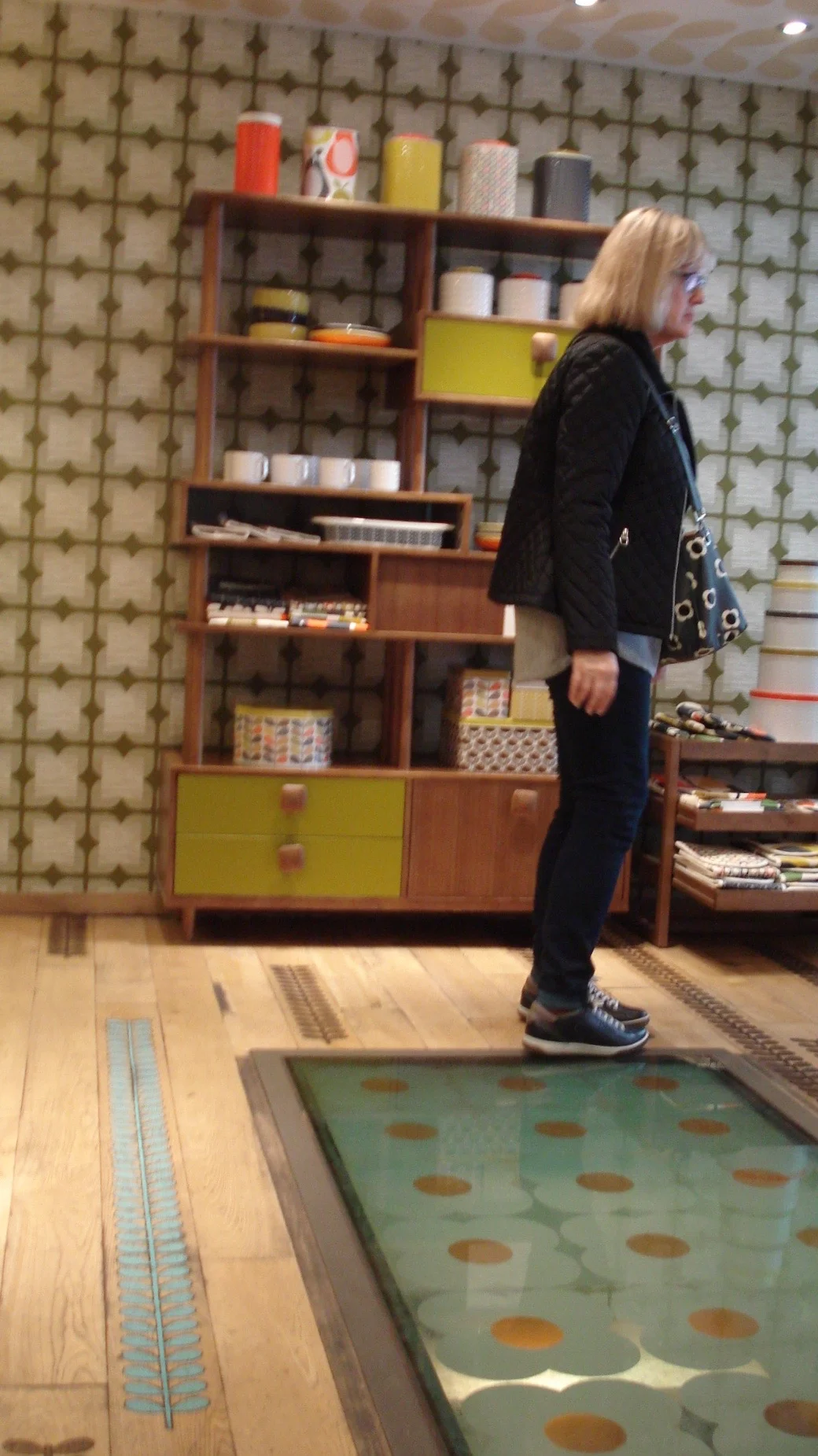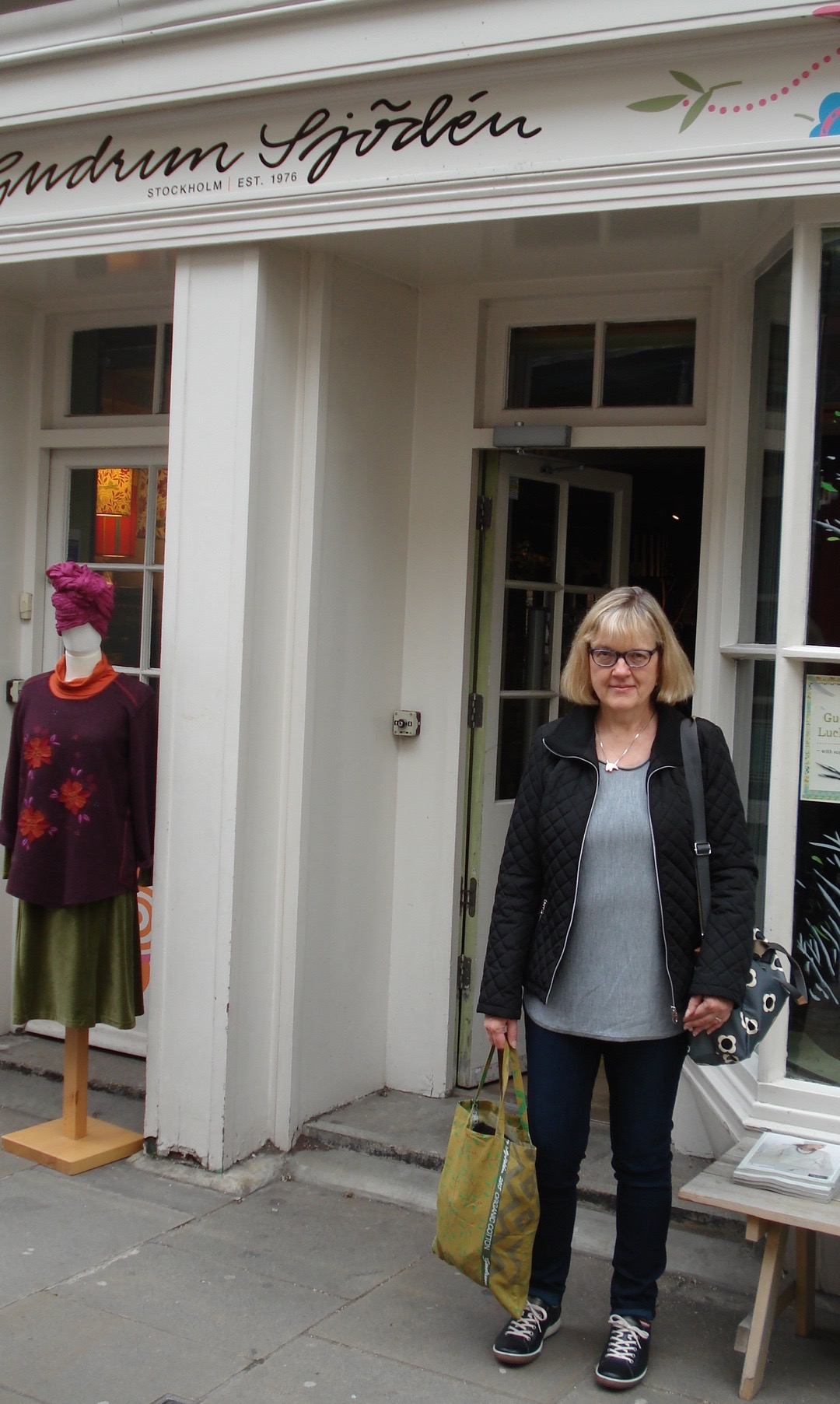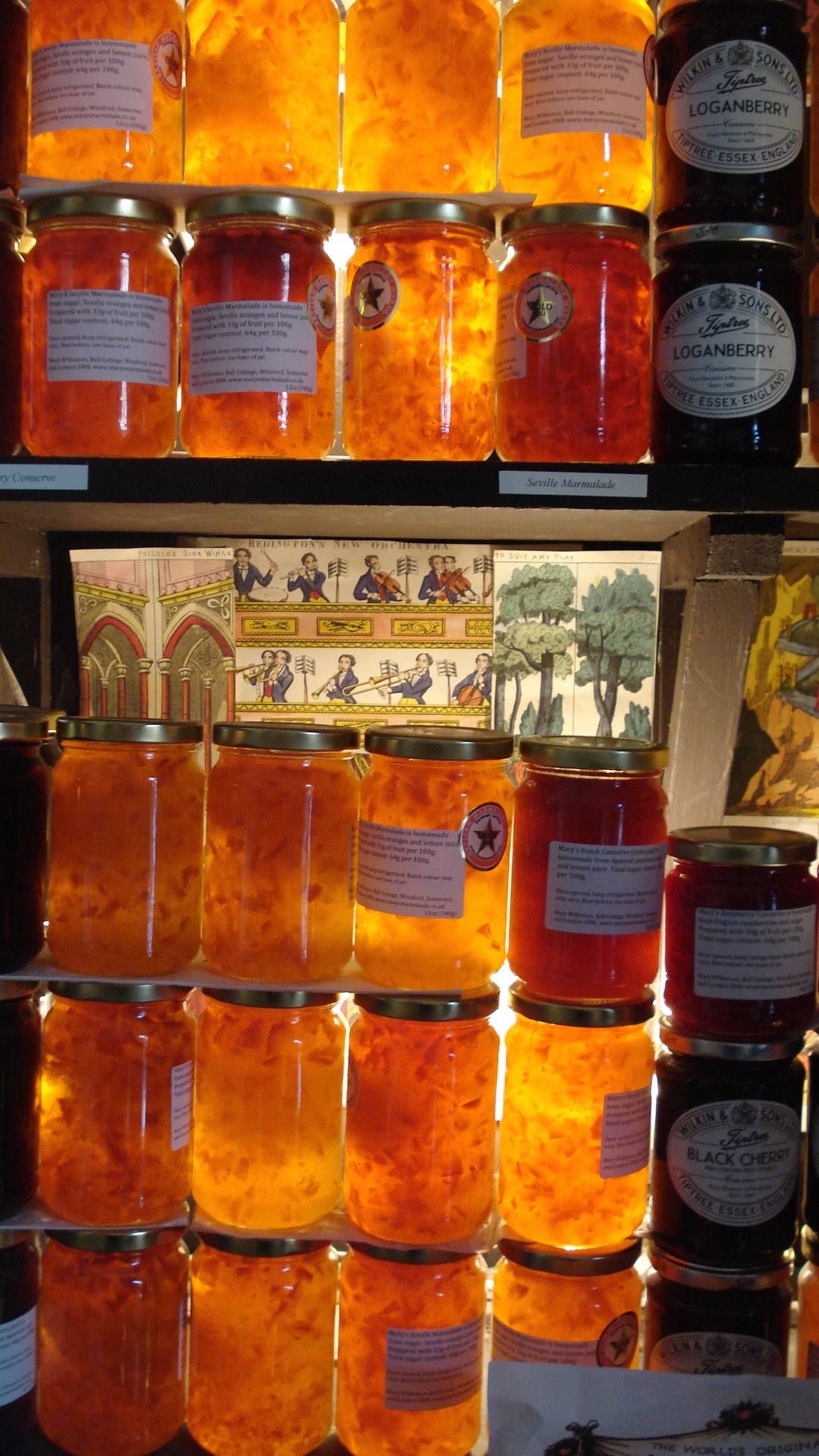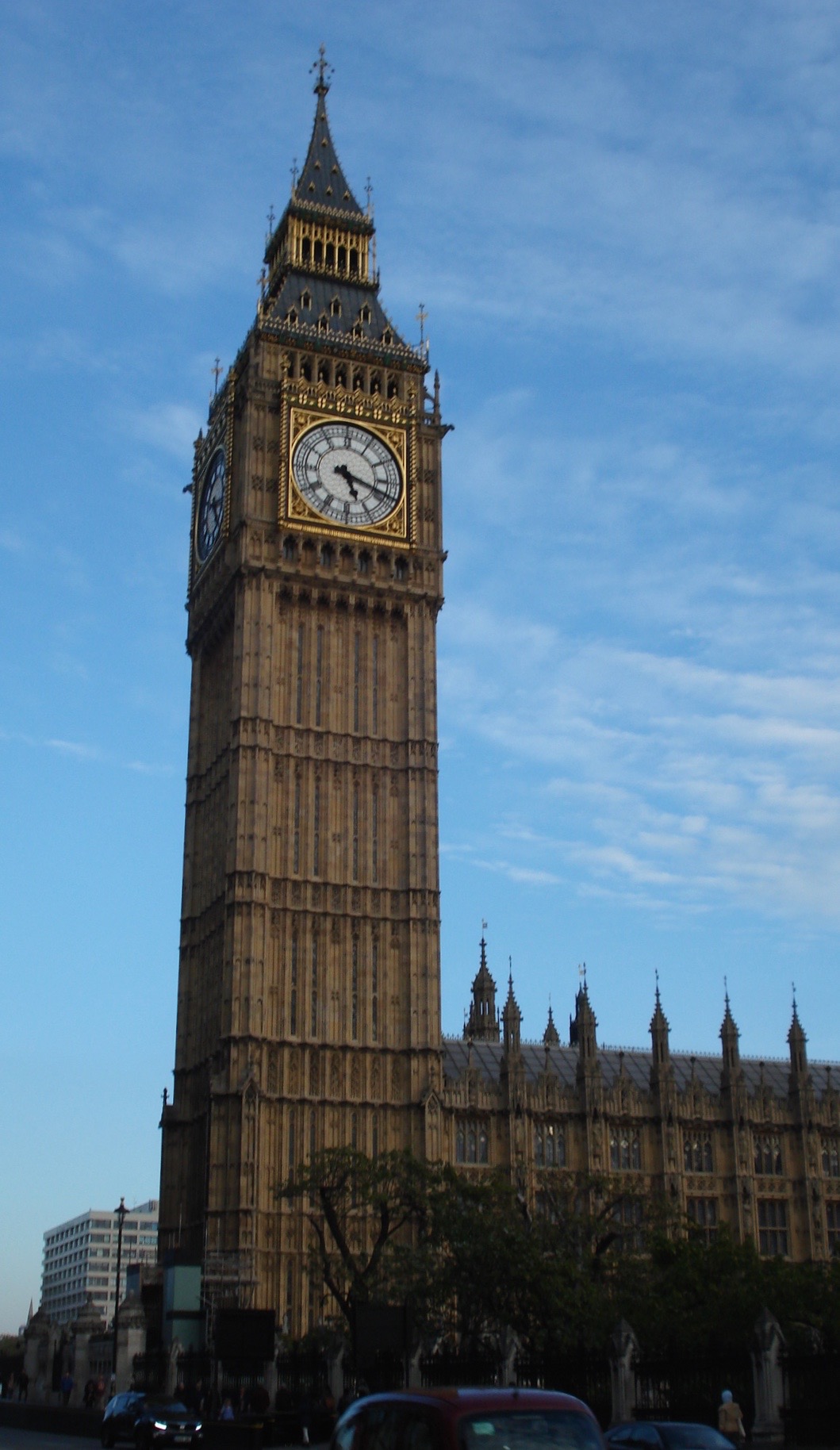Our Trip to London
Our Trip to London
October 17, 2015
Beth and I did not go on a trip this past summer; so we decided to take a “summer vacation” during the six days that Beth had off around Columbus Day in October. Beth had never been to England, which is surprising given the number of times she has been to Europe, but she at first wasn’t too keen on visiting London. Why, I don’t know—perhaps because of the egregious way the English treated her Irish ancestors over the years. Beth seems to take it personally. (Because all her grandparents came from Ireland, Beth believes that she is Irish as well.) I argued with her that she loves Europe, and England is a part of Europe. But she counter-argued, “How can England be a part of Europe when it isn’t even connected. It’s on an Island, for heaven’s sake, and their main language is English. Who ever heard of going to a country in Europe where their main language is English? That’s not Europe.” It did occur to me that even the English aren’t sure if they are in Europe, After all, look at all the debates they have been having with the EU. But whether we were actually in Europe or not, now after coming back home from London Beth claims that it is her favorite place on earth, and she wishes she could live there. (Of course she says that about most every place we visit right after the vacation ends.) What made London so special for her? Well, according to Beth, there was a general vibe we experienced in Londoners that exuded a zest for life, a sense of fun, and yet we found them to be extremely courteous, helpful, and civil. Let’s face it, the British may not gush with emotional displays, but they sure know how to be polite and to form orderly queues.
Not counting a travel day at each end of our trip, we had four days to do London (Friday through Monday). I suggested that we visit some cathedrals, some historical sights, some museums, and see art. Beth informed me that she didn’t care a whit about history, culture, or art; she was going to London to shop. And so it went. They don’t call London a city of shopkeepers for nothing. After checking into a quite proper hotel in a quite proper part of town—The Chesterfield Mayfair—a hotel, by the way, that was of a class that we would like to aspire to, we got busy shopping (but with a little history and culture thrown in, and a lot of good eating along the way).
When we stay in a new city, we love to experience it by walking, and in London we walked a lot. To get ready for the trip, Beth had searched through her extensive shoe museum to find the perfect pair of broken-in walking shoes. However, she decided instead to purchase a new pair of shoes. (A ruse, don’t you think?) From my severely limited shoe collection, I chose a pair of well broken-in walking shoes. Wouldn’t you know it, Beth developed blisters on her heels from the new shoes and hobbled around as a cripple for much of the trip. At the same time, my too well-worn shoes wore through the insoles and left me hobbling around as well. Lesson learned: don’t choose your shoes the way we do. Instead, go with your broken-in, comfortable sneakers.
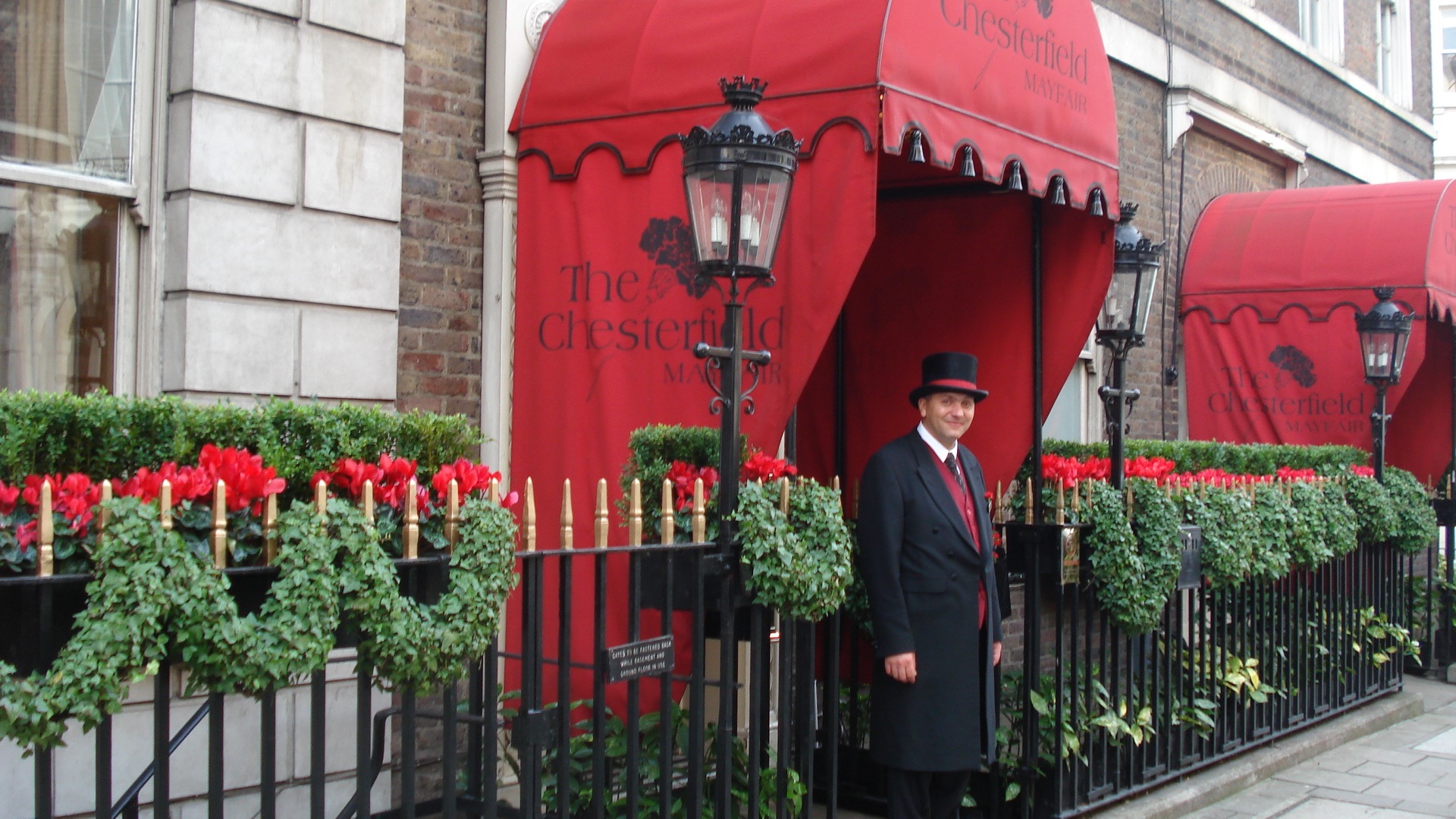
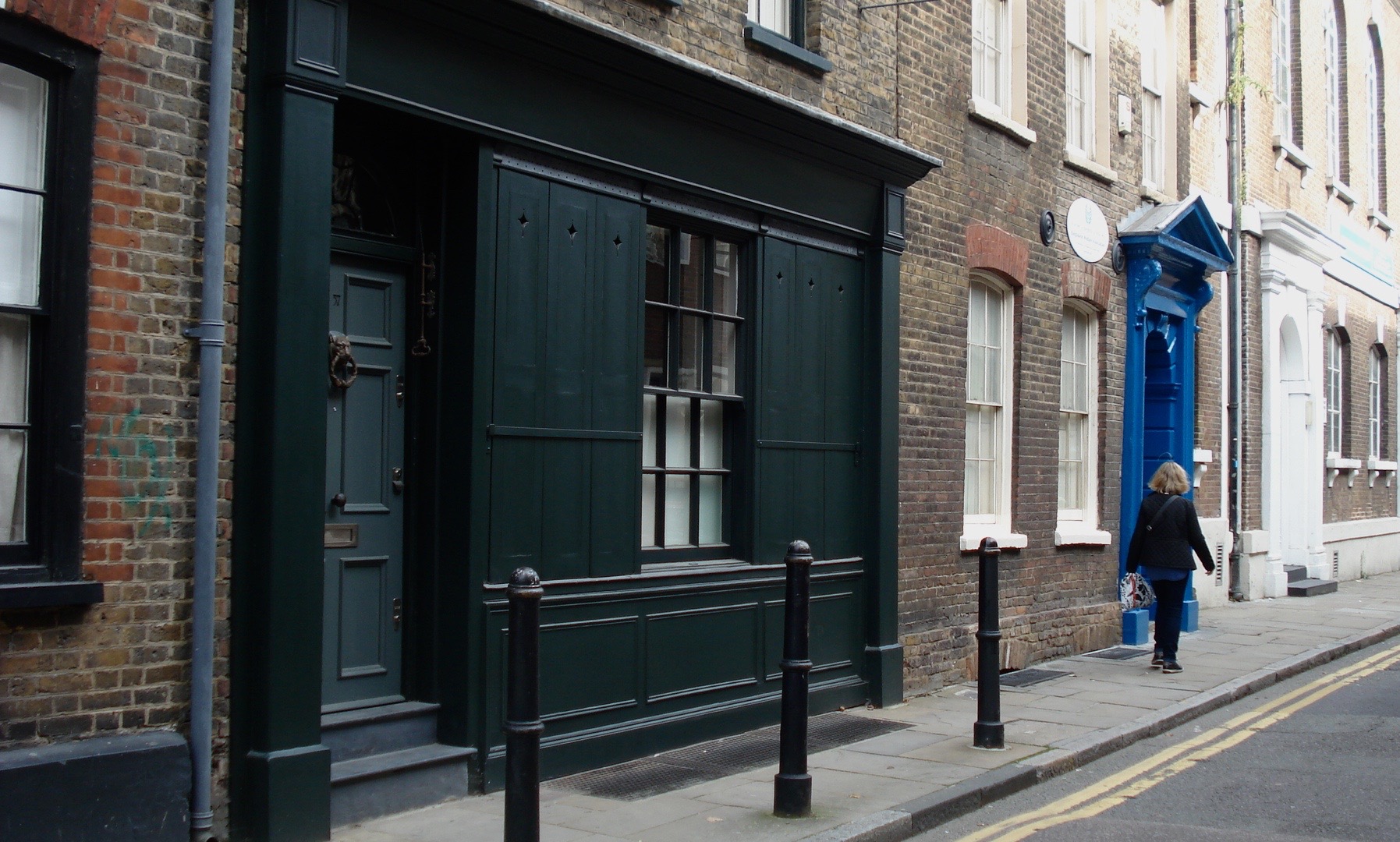
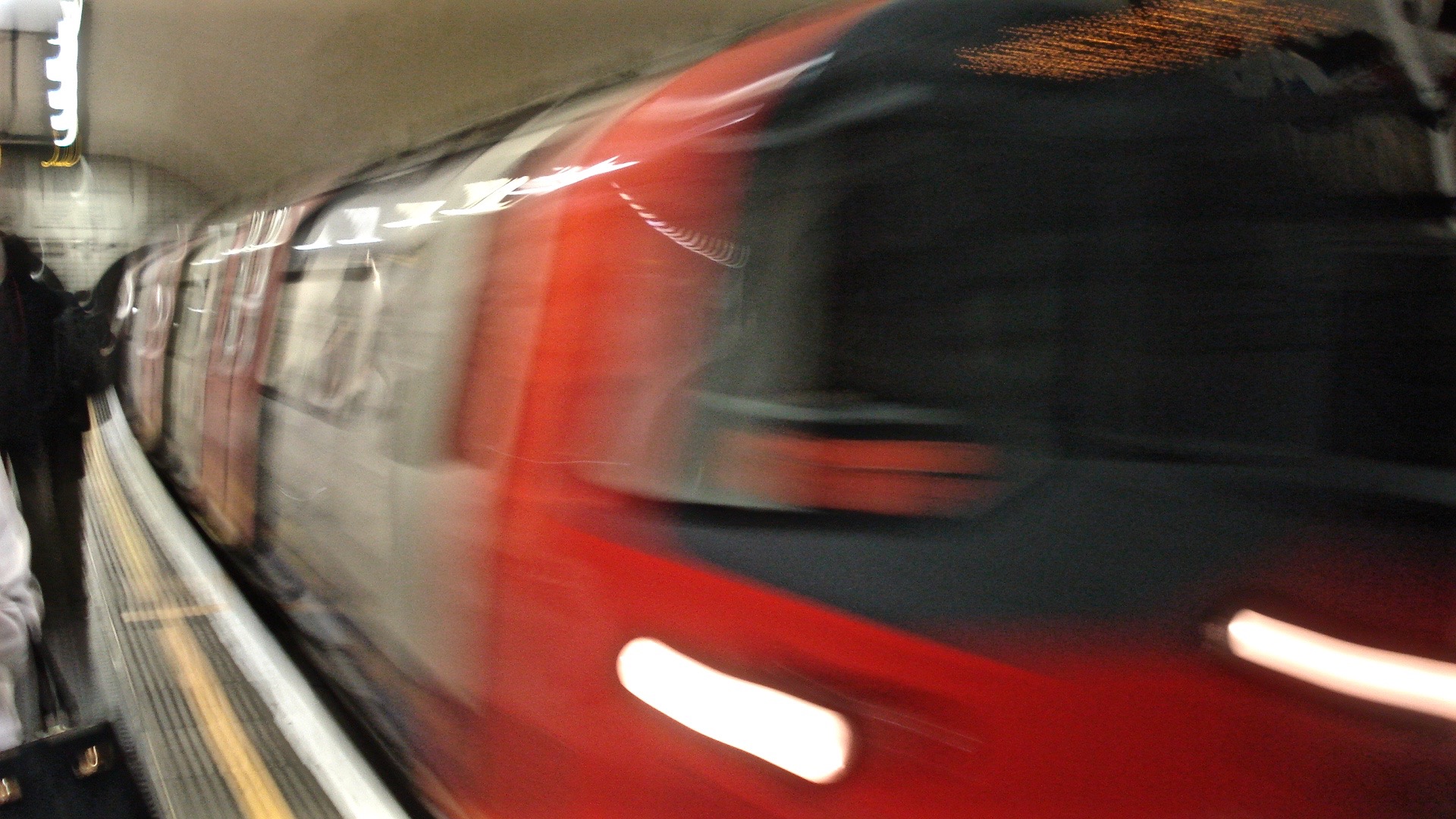
Besides walking, we used the Underground (the Tube) extensively. Though London seems as crowded as New York, we found the underground system to be well marked and to have fast trains that came through almost continuously. What a large complicated system; yet we seldom got lost. Speaking of Londoners' courtesy, when anyone bumped us on the Tube, they would say, "Oh, I'm sorry." Three times someone stood up and offered us a seat. What? do we look like we need it? Maybe they could sense that we were walking around on bloody stumps.
This Little Piggy went to Market
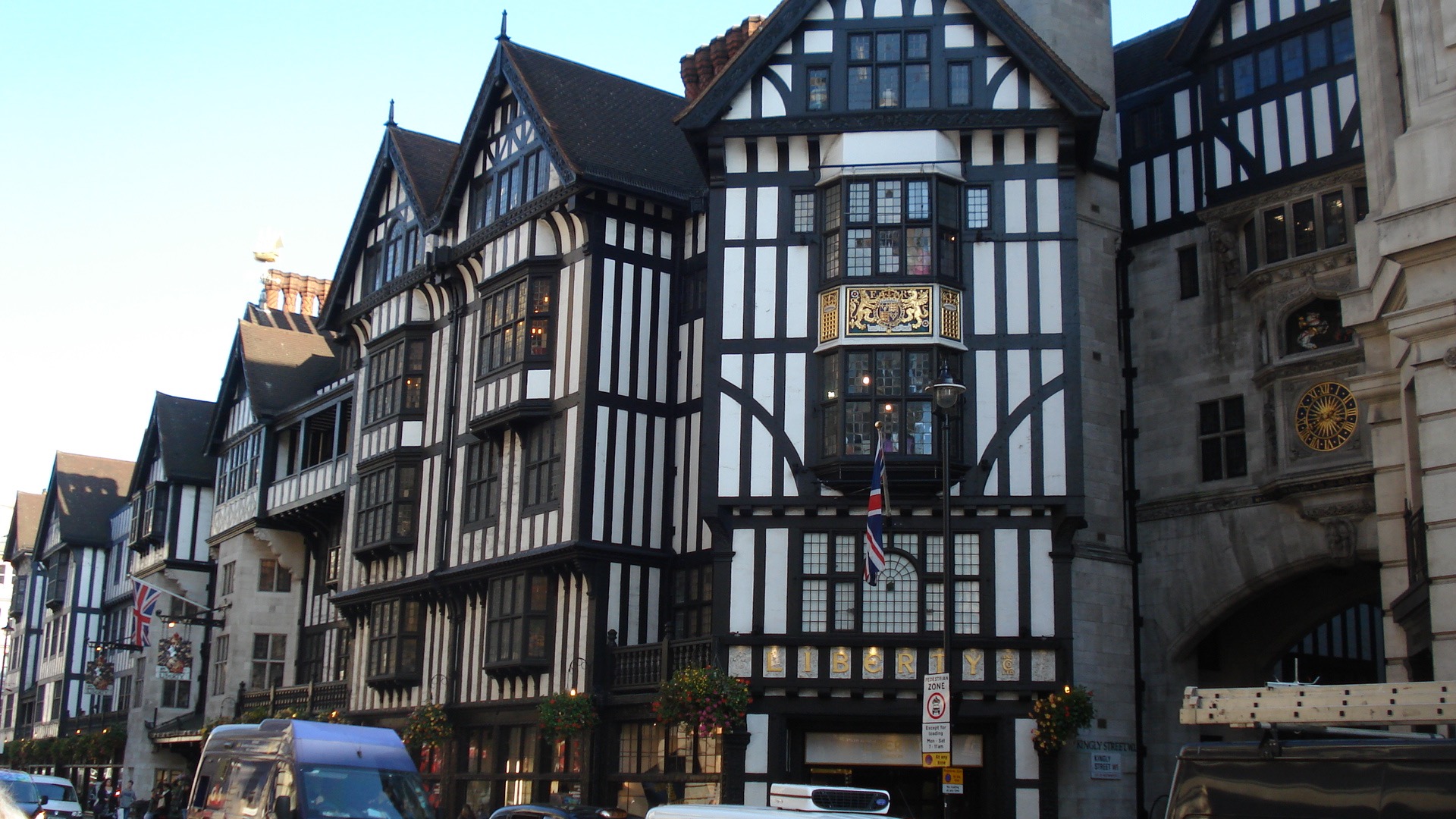
OK, we came to shop. So let’s get to it. First and foremost, Beth wanted to visit the flagship store of Orla Kiely (originally from Ireland), her favorite, snooty, brand store of purses, clothes, and accessories. So we headed there. It ended up being surprisingly small and not too well stocked. (The small Orla Kiely store in New York City had more stuff.) Beth didn’t buy anything there, but at least she had made the pilgrimage. The added bonus was that we serendipitously found nearby her second most favorite brand store, Gudrun Sjoden (from Sweden), or as Ethan, John, and I call it—Gudrun Sludgen. In that store she bought several pieces of clothes. I will admit, the store was made for her.
We also visited three famous department stores, first Harrods, perhaps the largest and most famous department store in the world, and expensive. We bought chocolate and a few little things there and just wandered through most of it grossing about how expensive things were. We then visited Liberty Department Store, located in an old English Tudor building right off Regent Street. And then we visited John Lewis on Oxford Street, a department store that was more at our price level and had the added advantage of having a lot of Orla Kiely merchandise, though Beth still did not purchase any of it. So much for the big stores.
The best part of our shopping experience was the street markets. London is known for many crowded street markets, jammed with small stalls selling antiques, second-hand clothing, funky crafts, steam-punk stuff, a lot of junk, and of course food from everywhere in the world. Most of these street markets have been going for decades, if not centuries. Too bad we couldn’t get to all of them.
First, we visited Borough Market, not surprisingly on Borough Street, south of the Thames, near London Bridge, and right under the railroad tracks. This one was our favorite. There were food stalls from all over the UK. We ate lunch in an old pub but then pigged out on cheese and local chocolate. If we lived in London, we would be coming here every week. Our favorite stall was one selling plates and aprons with pictures of various varieties of pigs painted on them. The artist was from the Island of Guernsey. We bought some stuff from him. We then visited the old Covent Garden Apple Market in the center of London, which now contains booths of hand-made clothes and a lot of kitchy stuff.
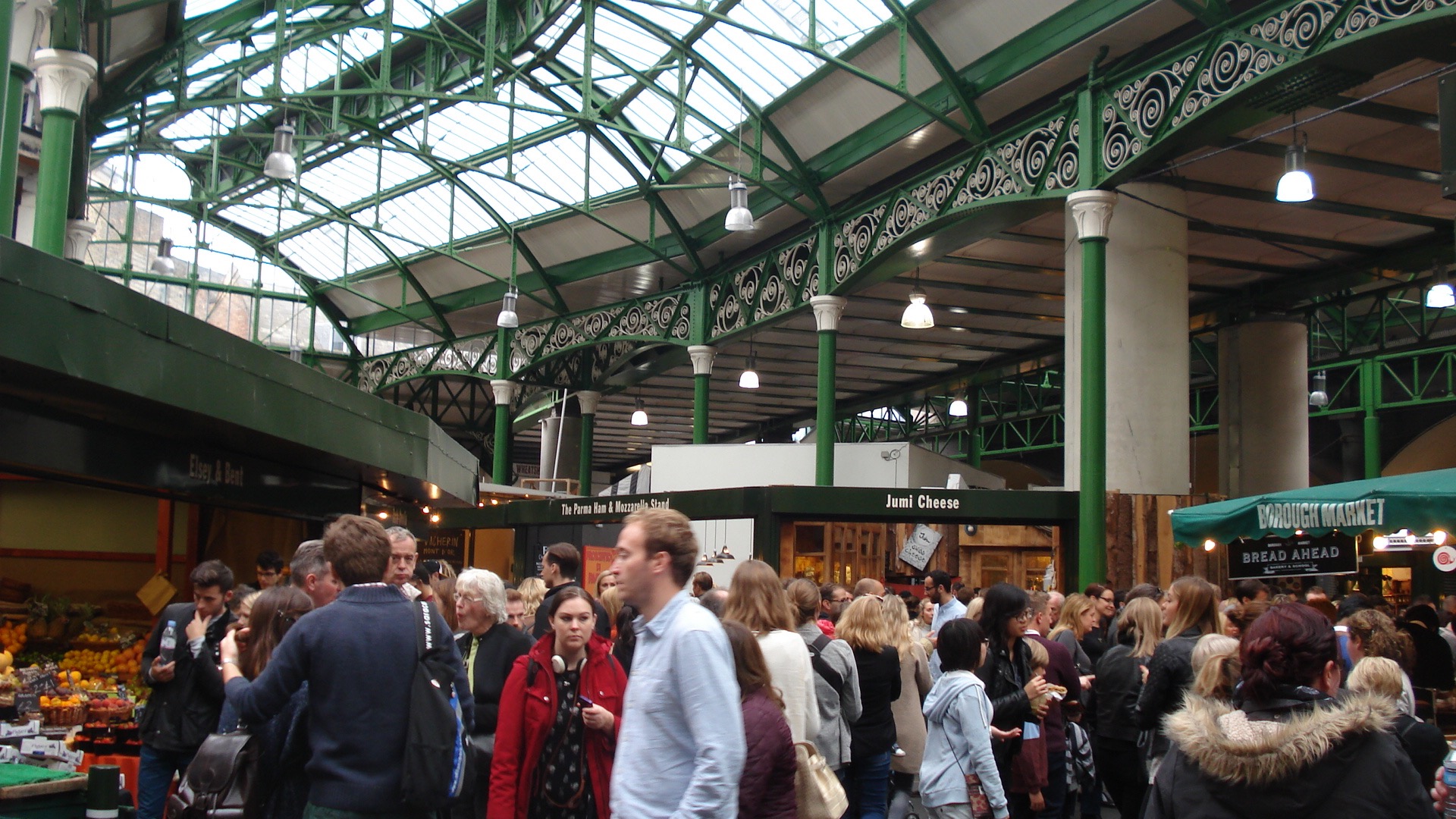
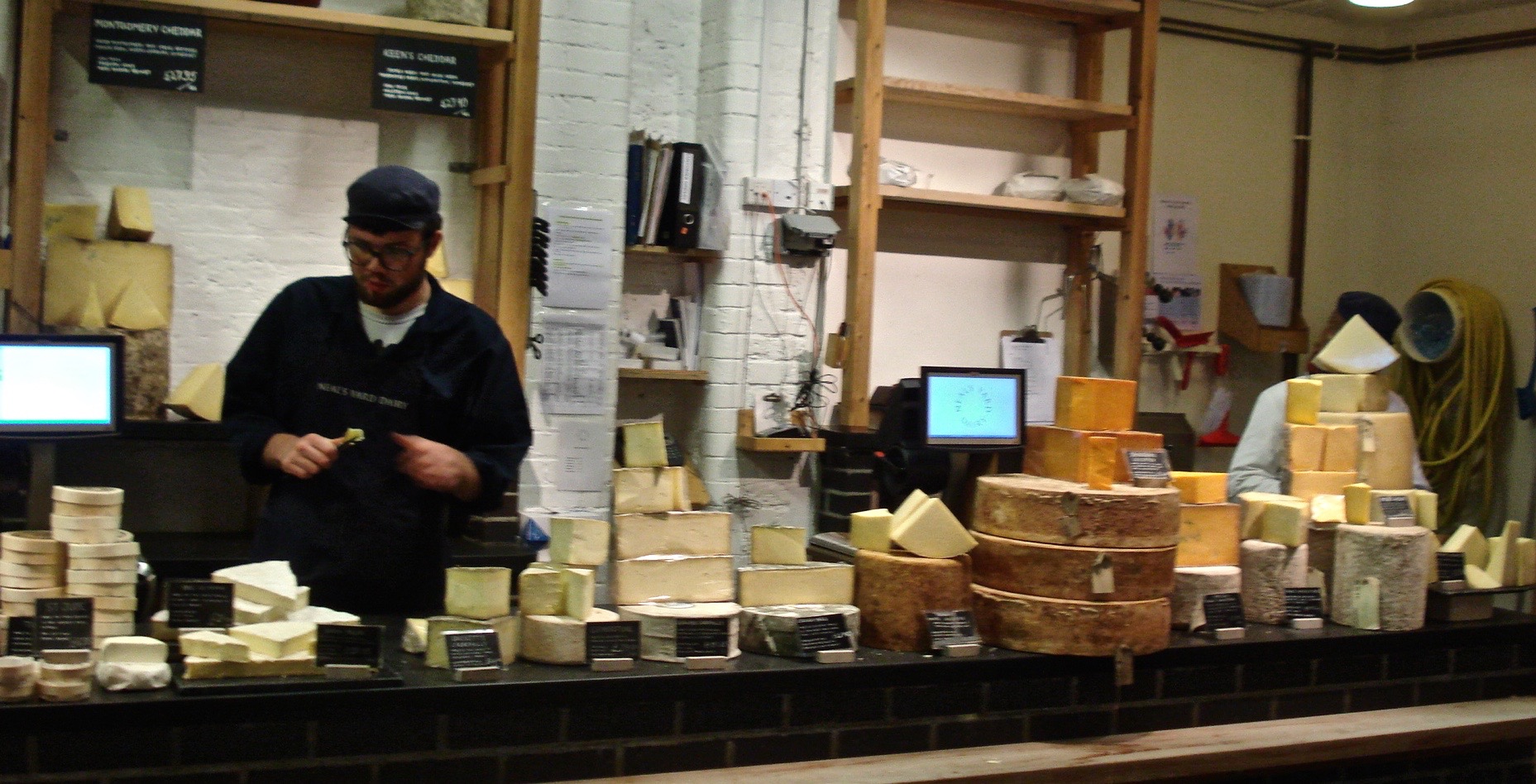
Third, we visited Old Spitafields Market and particularly liked the hand made clothes and antique hats for sale. The best part of Spitafields was the indoor food trucks, many of them made from converted campers and trailers, such as old Air Streams. While we were at Spitafields we observed a mass of folks who had gathered for a dance lesson in Roaring Twenties and Swing style dancing. Someone gave instructions over a huge PA system, while everyone danced in unison to the music. Many of them had dressed appropriately for the Twenties and Thirties, and the whole affair looked like a huge musical production. We were tempted to join in, as anyone could do, but we couldn’t quite bring ourselves to do so. Maybe we didn’t because of the pain in our injured feet. At any rate, we had a difficult time leaving, as the entire massive dance experience was so mesmerizing.
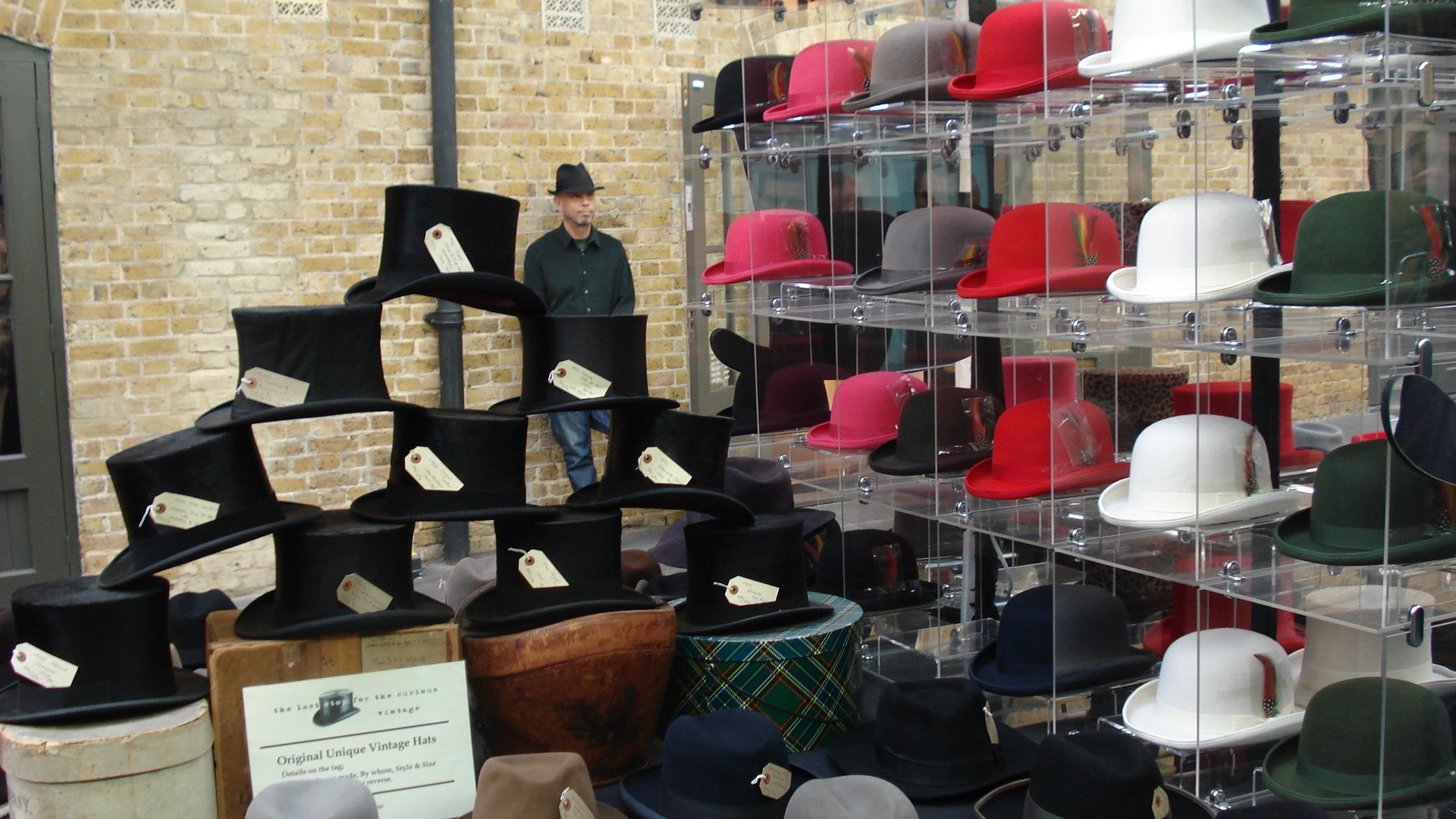

On the same day that we visited Spitafields, we walked to the nearby Brick Lane Market. Now this one was the funkiest, most ethnically diverse, and crowded market of them all. We ate some spicy Middle-eastern meals while we were there. The last market we visited was the biggest—the Camden Lock Market, north of central London—located at the Camden Locks on a canal and in a series of Victorian era warehouses, old horse stables, and alleyways, all connected and crowded, and with extensive and diverse arts and crafts, funky clothes, and food, food, food. We ate Italian food while there. Indeed, the street markets are worth visiting.
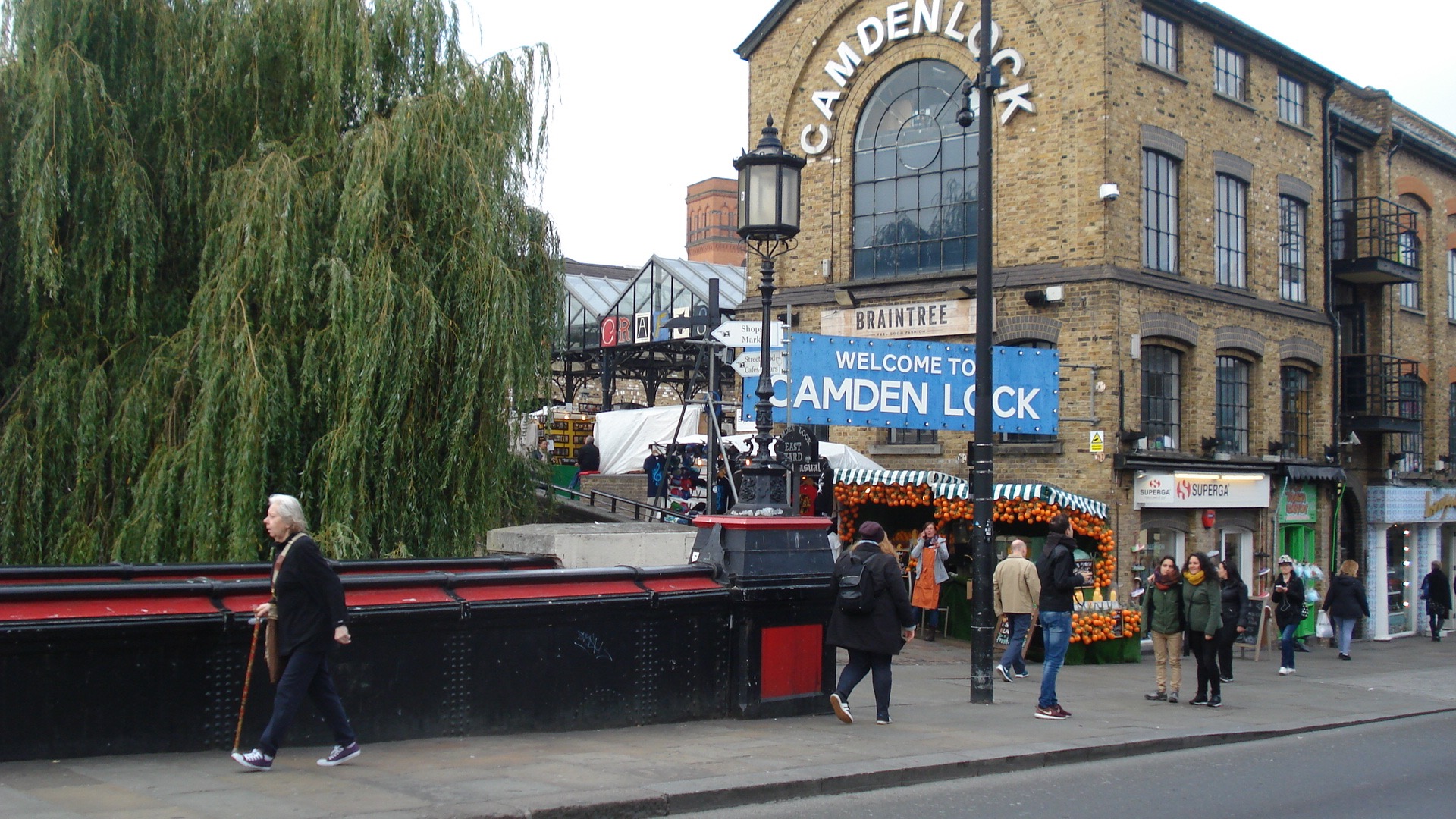
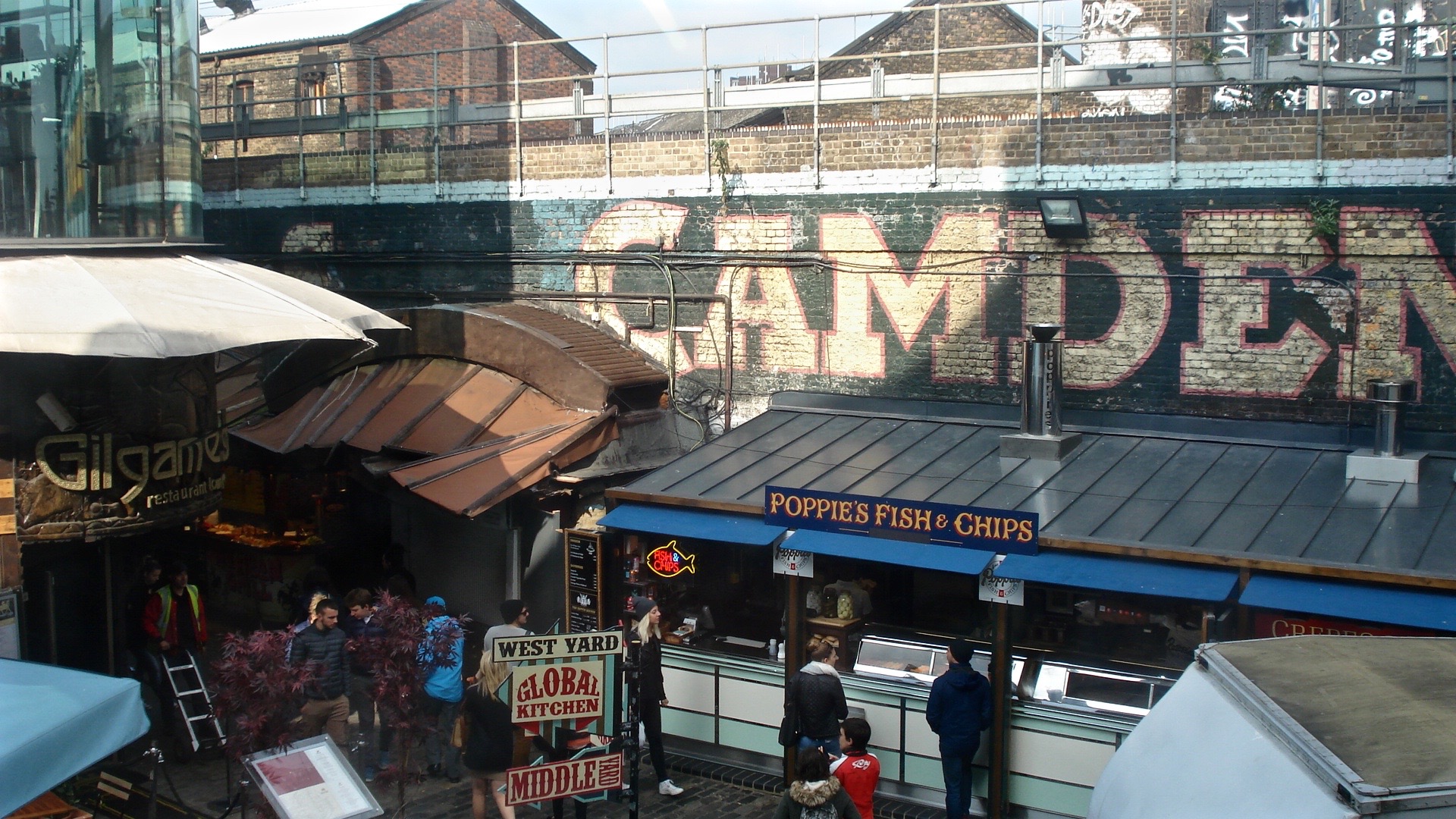

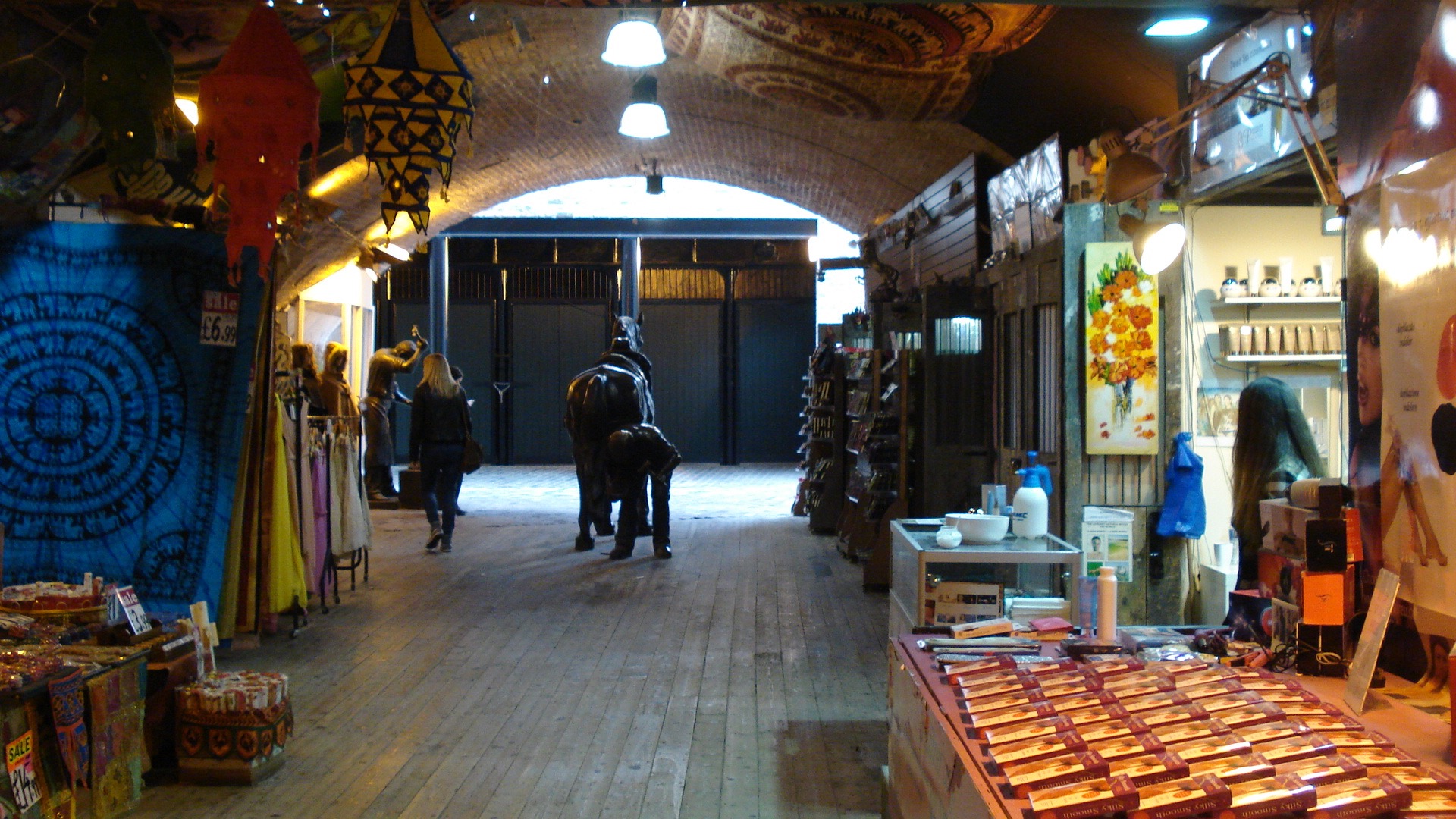
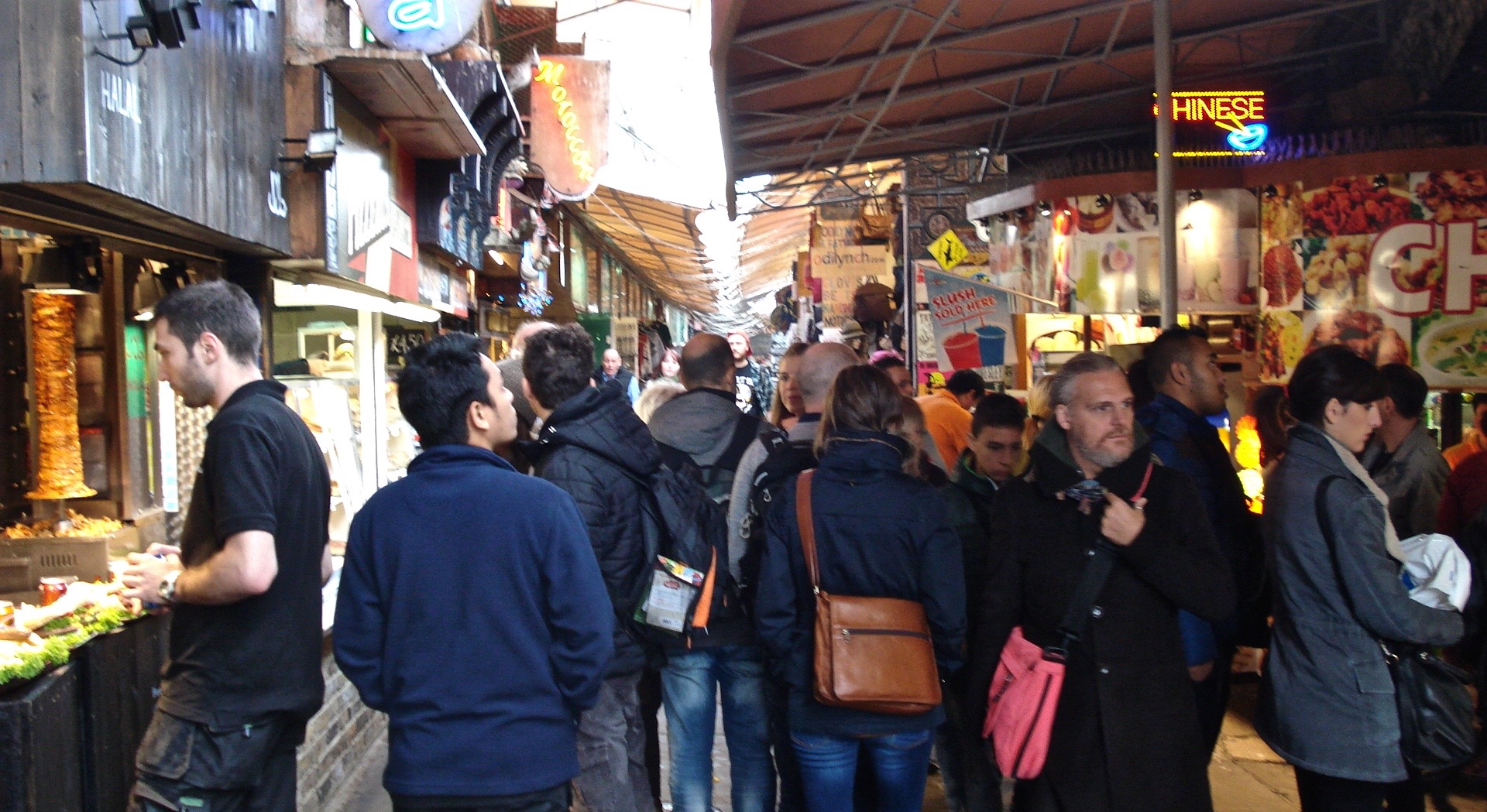
Culture, with a Capital C and a small c
As you can imagine, our shopping at street markets left little time to immerse ourselves in the Culture of London. But let me report on our feeble attempt to do so. First, the foremost cultural experience that we sought was to climb inside a blue, police, call booth like the one used by the Doctor. But Doctor Who fans be warned: we found no police call booths, myriad red phone booths, but no blue call booths. We did learn that there in fact is just one left in all of London, probably for Dr. Who fans, but we never found where it was.
We did visit the Tower of London. That place is so well known and has such a long history that I don’t know if it is worth describing in much detail here. We saw the different buildings, the original inner castle, the spiky drawbridge, and various Beefeaters walking around in their flamboyant uniforms. We were hoping to see large ravens roaming free on the grounds, as I had seen when I first visited the Tower of London way back in 1965. Someone told us that the ravens are occasionally let out to wander around, but we only saw them in their cages. We did see a burial plot with a common headstone, right beneath the outer wall, where some of the most beloved of the ravens have been buried. Everyone working and living at the Tower sees them as part of the family.
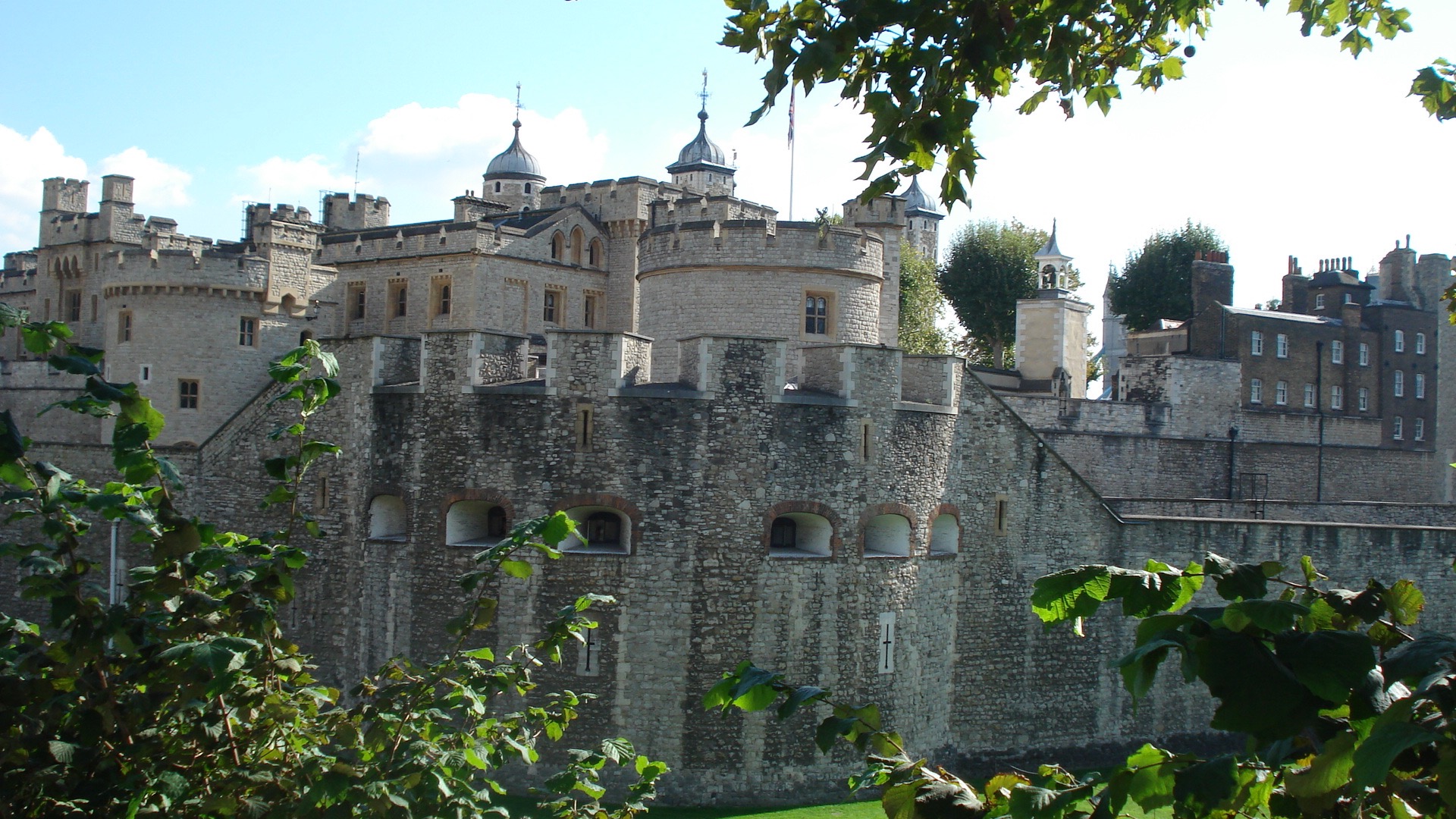
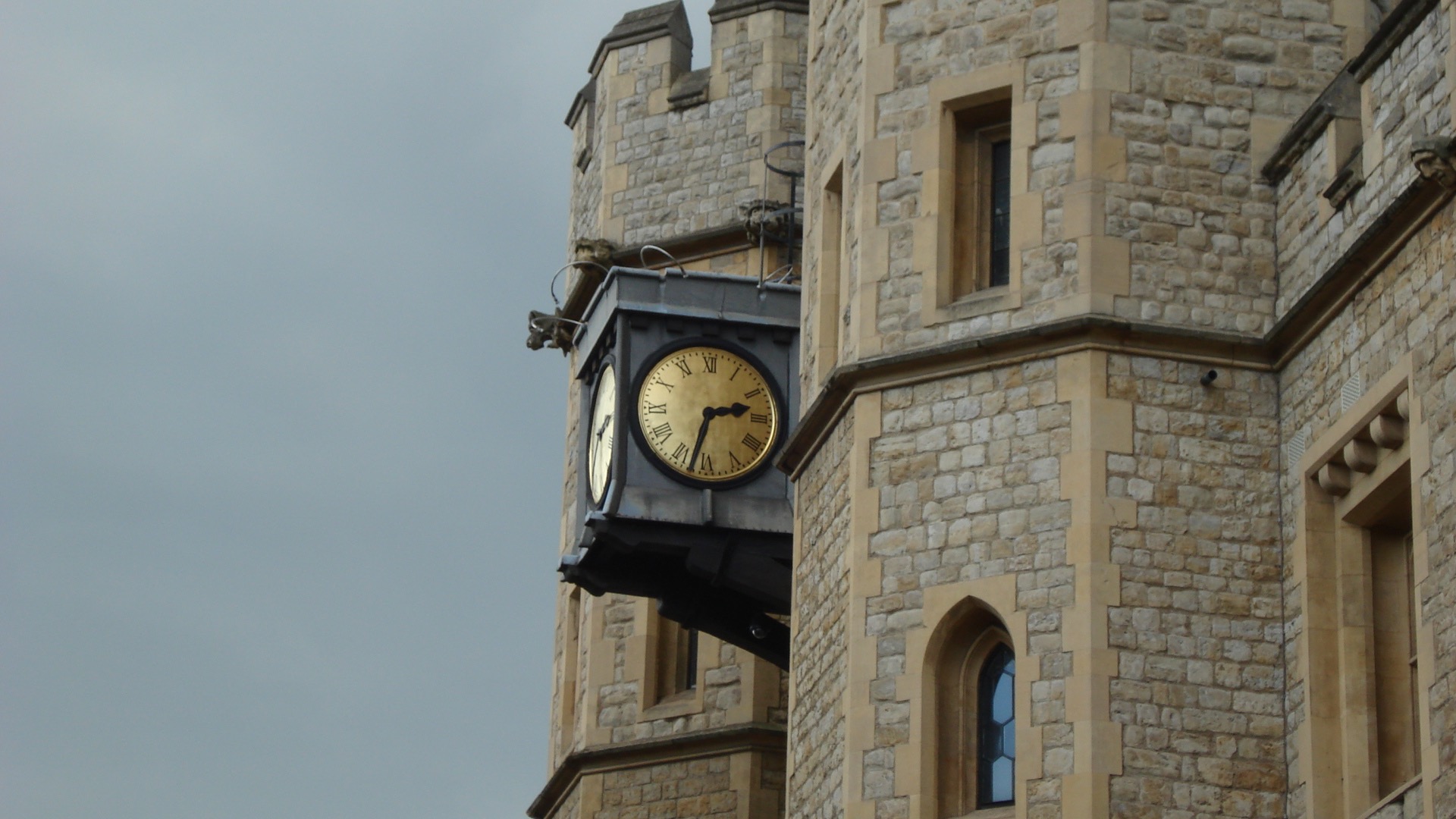
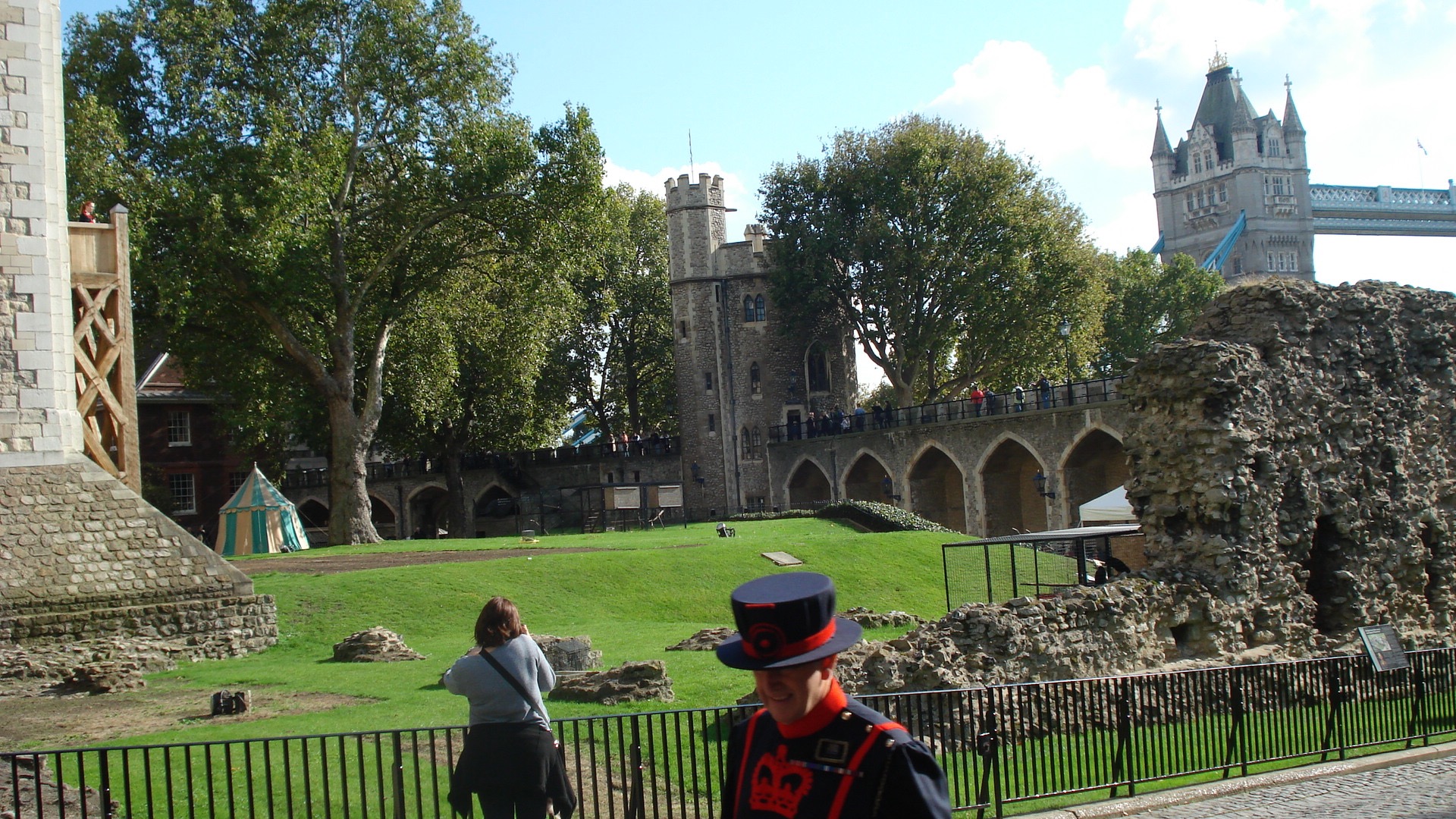
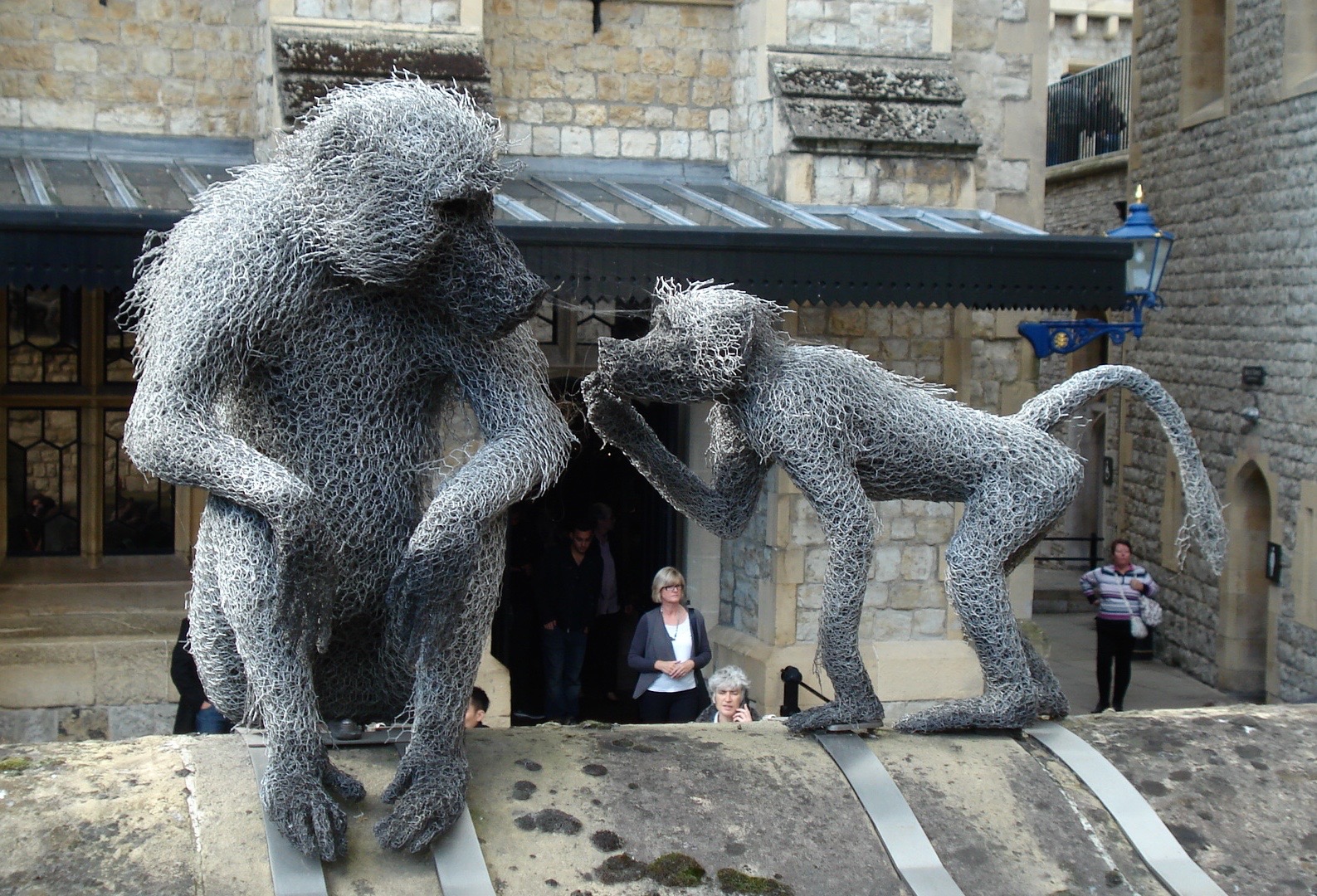
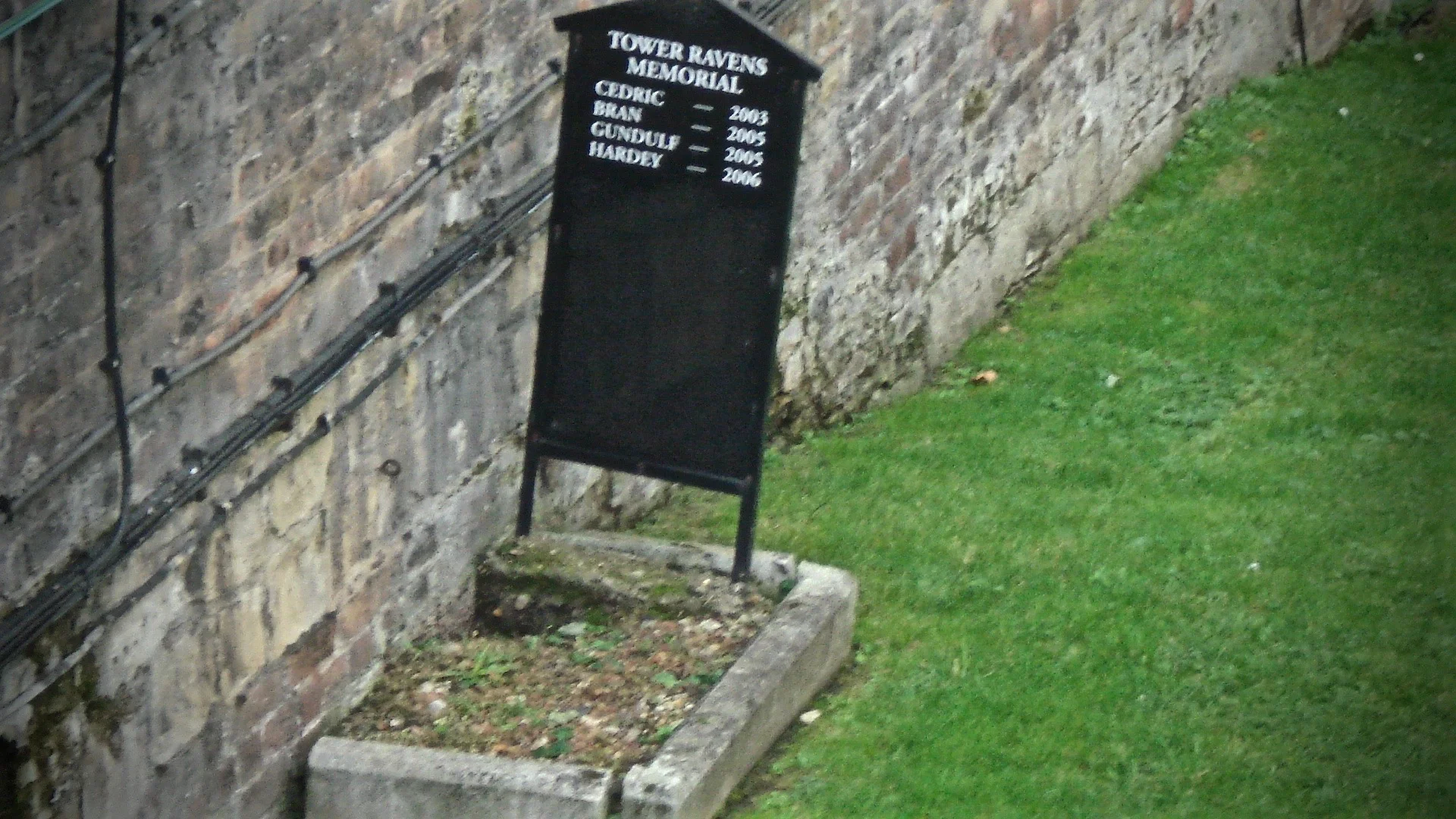
Within the confines of the Tower grounds we saw this one particularly large and shiny suit of armor (note the photo). I believe this guy got particularly excited when he went into battle. What do you think?
I’ve seen the Crown Jewels before, but they are worth viewing again and again. They are well displayed and securely guarded. I don’t think anywhere in the world (including the gems at the Smithsonian Institute that sport the Hope Diamond as their center piece) is there a more beautiful and priceless set of gems and jewelry than at the Tower of London. I wonder if the Queen ever arranges to sneak down to the vaults at night to fondle her jewels and put on the crowns and rings and run stuff through her fingers.
We also hung out around Westminster Abbey and Parliament Building and admired “Big Ben” on the tower. On Sunday evening we attended a free organ recital in Westminster Abbey. The entire program was of Mendelssohn’s and Robert Schumann’s organ music. I love acoustic pipe organ music played on the old instruments in churches and cathedrals that afford perfect acoustics for that beautiful, rich sound—from “the King of Instruments.” This particular organ and the Abbey rewarded us with that beautiful music. Nevertheless, as happens with me, I dozed off half-way through the concert and once again embarrassed Beth. I can’t help it, I can sleep anywhere, anytime.
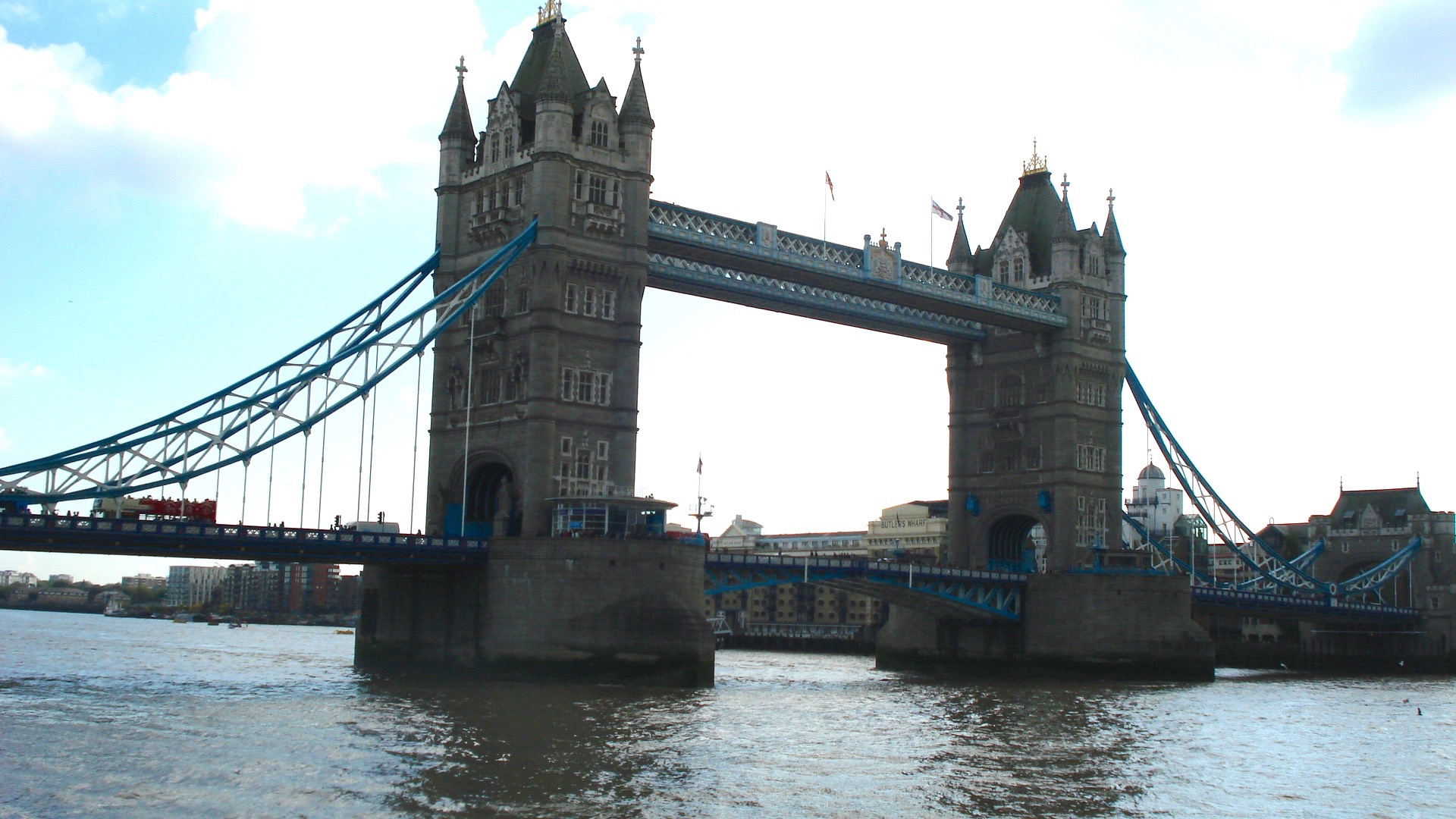
One of the more interesting sights for us was to see several different school groups walking around, perhaps on field trips, and all wearing blue blazers and their school ties. I know that in England, and in keeping with some of the weird British practices, they call these private schools, where these kids hailed from, “public schools.” Go figure. The most interesting school was just behind Westminster Abbey in a large courtyard surrounded by school buildings, where we saw many pre-teens and teens coming out from their classes and probably heading off to dinner. This was the Abbey Court School, and I thought I was in the middle of a British movie about these upper-class kids and the antics they demonstrated.
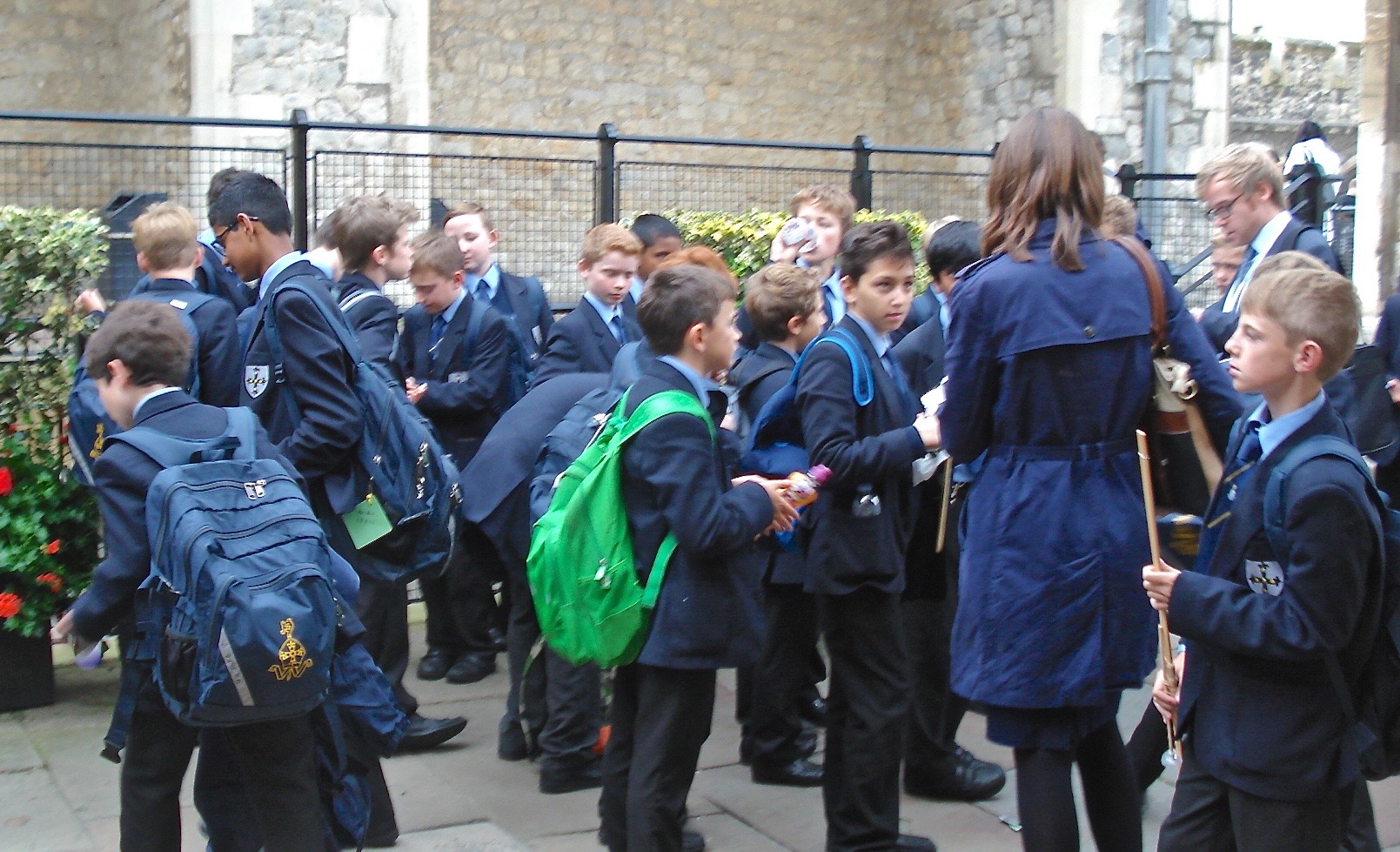
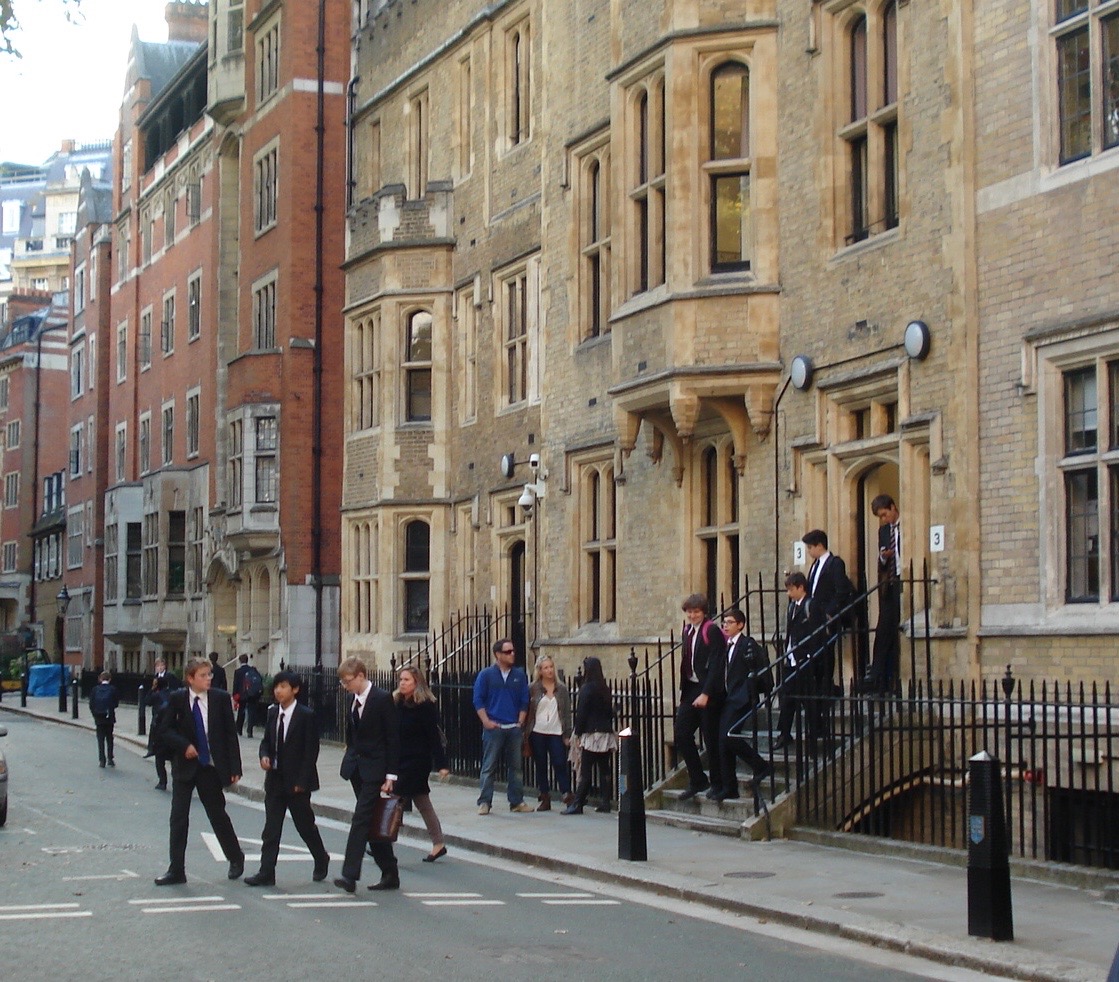
We are always on the lookout for good dogs. Here was our favorite—a huge Leonberger accompanying his street musician.
MOMA or MOBA?
To round out our experience with high Culture (note the capital C), we visited the Tate Modern Museum. I had read that this rather new museum was the premier modern art museum of England, on level with MOMA (Museum of Modern Art) in New York. Well, let me tell you about our experience there.
In Dedham, Massachusetts, we have an art museum called MOBA (Museum of Bad Art). It is located in the downstairs lounge area at a local movie theater, and, what with recent extended acquisitions, has expanded into the restrooms. The premise of MOBA is that no art in the museum must cost them over $2.78, and no piece must be mass produced or done as a joke (e.g., no picture of crying clowns or big eyed little girls). Each piece must exhibit a serious attempt on the part of the artist at creating good art, but, either through the ineptitude of the artist or some fluke on the day the art was created, the whole artistic endeavor went awry. The museum exhibit is worth seeing. It will bring tears to your eyes.
So, was the Tate Modern the equivalent of MOMA or MOBA? Our first impression was that it was a large warehouse, still under construction, and in need of a good cleaning. The museum was free, but two main exhibits cost extra—many pounds extra. So we visited the no cost, exhibition rooms housing selections from the museum’s permanent collection and some temporary exhibits. Admittedly, there were some good works of art and some from famous artists, such as Warhol, Picasso, Kandinsky (one of the most beautiful Kandinsky paintings I have seen). They had more paintings by Piet Mondrian than I had ever seen in one place. I like Mondrian’s art, but when I saw them altogether, with their straight, intersecting lines, and assorted blocks of color, I felt like I was viewing my app of street maps. (I have to say that I believe there is a lot of OCD experienced by artists.)
Despite some of the good art, the ratio of MOBA style bad art to MOMA style good art was dangerously high. We went through room after room of stuff that made us say “Huh? What are their criteria for placing someone's piece in here? If they have no aesthetic criteria, which seemed to be the case, is it just that these artists need monetary support, or perhaps are they famous because they committed some horrific crime? Maybe this is an exhibit of some of the artwork of Jack the Ripper and his friends.”
I have chosen a few paintings to include here to give you a sense of what I am talking about, and let me describe a few specific examples. There was one rather large room with completely blank, white walls that was entirely devoted to a dirty garden hose that was tangled up and lying on the floor. Wow, I didn’t realize that my front lawn held such a work of art. Another large piece consisted of piled cubes of plexiglass, each cube holding a dog turd, gilded in gold (or at least a gold colored finish). Another room had one wall devoted to three large, black picture frames, but nothing in the frames, just white. The artist is oh so clever. And on the opposite wall was a canvas painted entirely in gray. After staring at it for a while, my eyes and my mind wandered for relief to the white of the walls. (Along with the gray canvas I have put the quote that accompanied the painting explaining what the artist had in mind, which boiled down was nothing. This particular statement reminded me most of the MOBA museum. See the statement after the picture.) One large wall was covered in perhaps a hundred small drawings, scribbled in pencil, of a woman’s crotch.
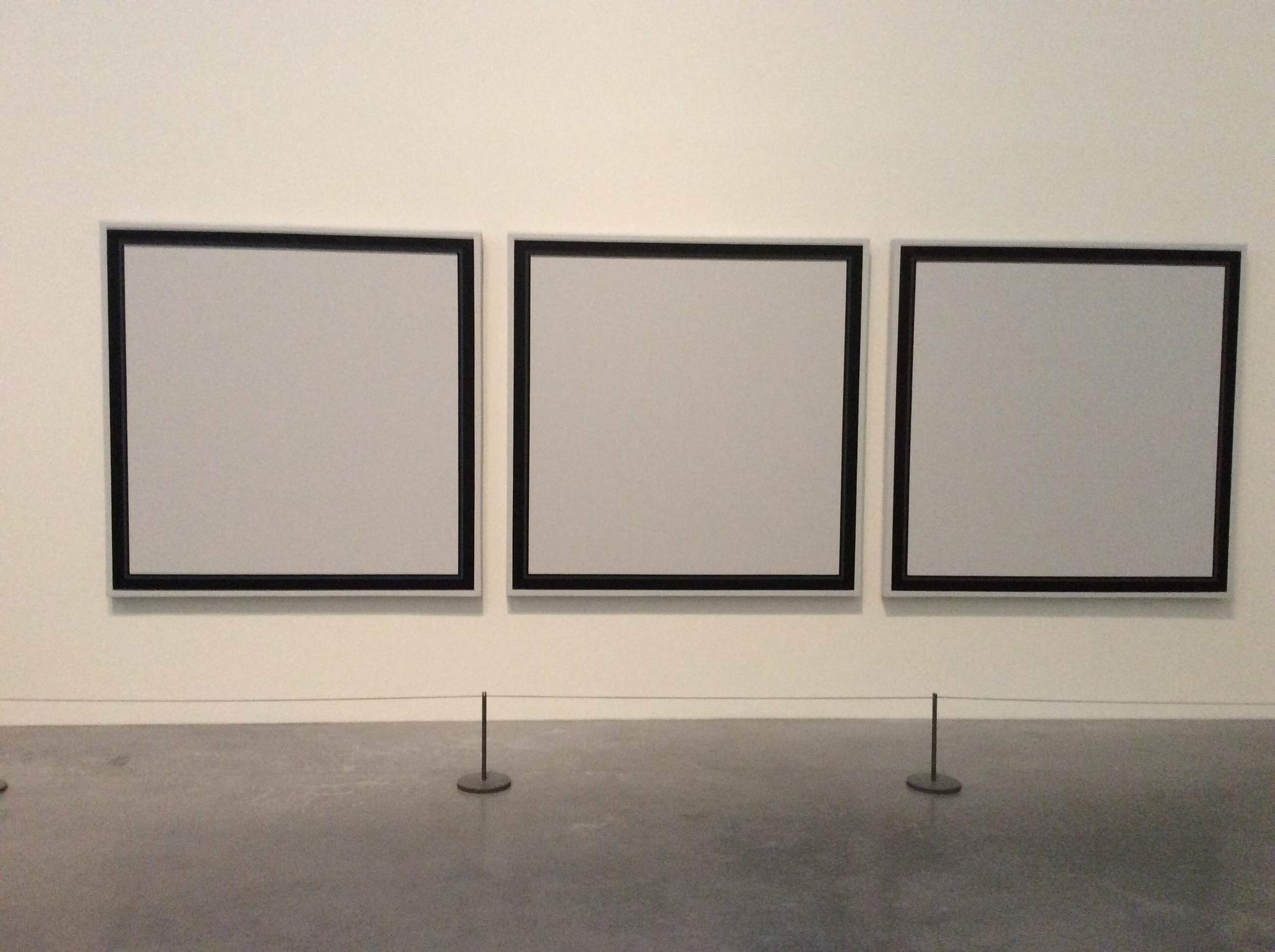
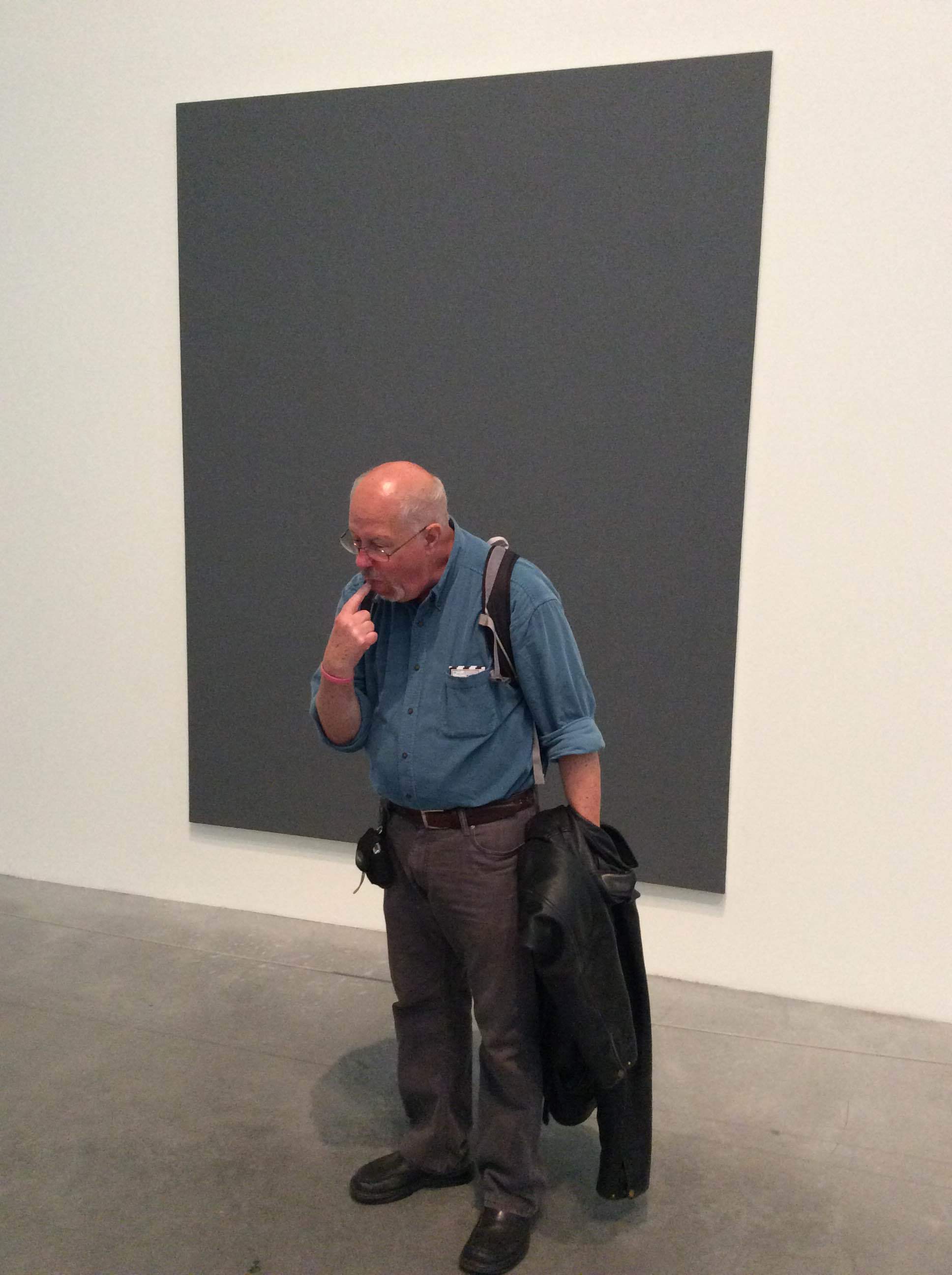
Here is the statement that accompanied the painting "Grey" (see above) by Gerhard Richter: "During the 1970s Richter produced several groups of grey paintings, attracted to the neutrality and inconspicuousness of the colour. 'Grey is the epitome of non-statement', he has observed, 'It does not trigger off feelings or associations, it is actually neither visible nor invisible...Like no other colour it is suitable for illustrating nothing.'" You think I made this up? I didn't; this is a direct quote from the artist. Don't you just love artists' statements?
To attempt to present a more balanced view, I have also included below a self portrait by Andy Warhol that I had never seen printed before and that was quite nice and actually showed some painterly skill. I also included one piece that was a piece of paper that was cut into a circle and an ellipse that hung out in a three-dimensional fashion. I liked it.
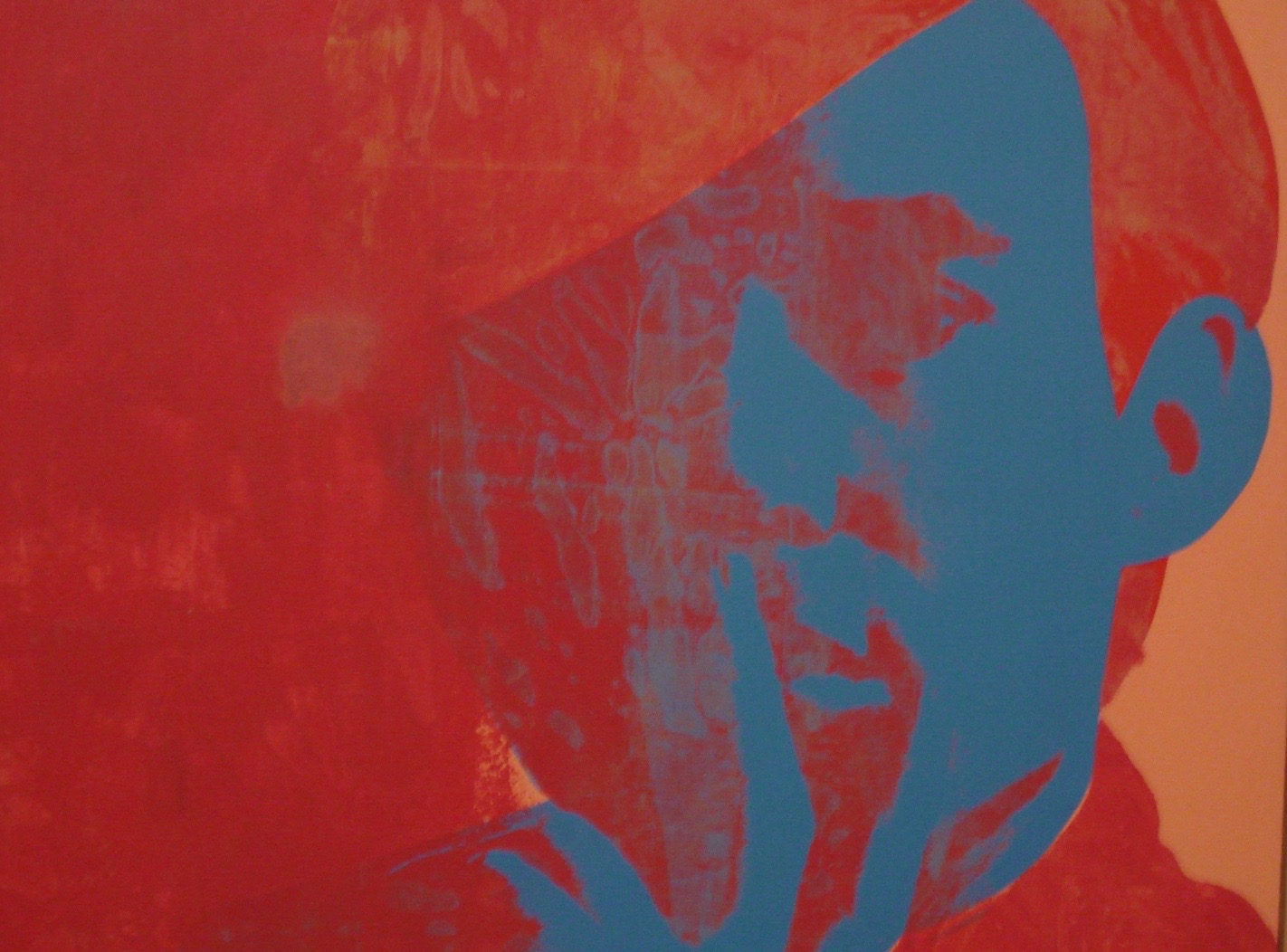
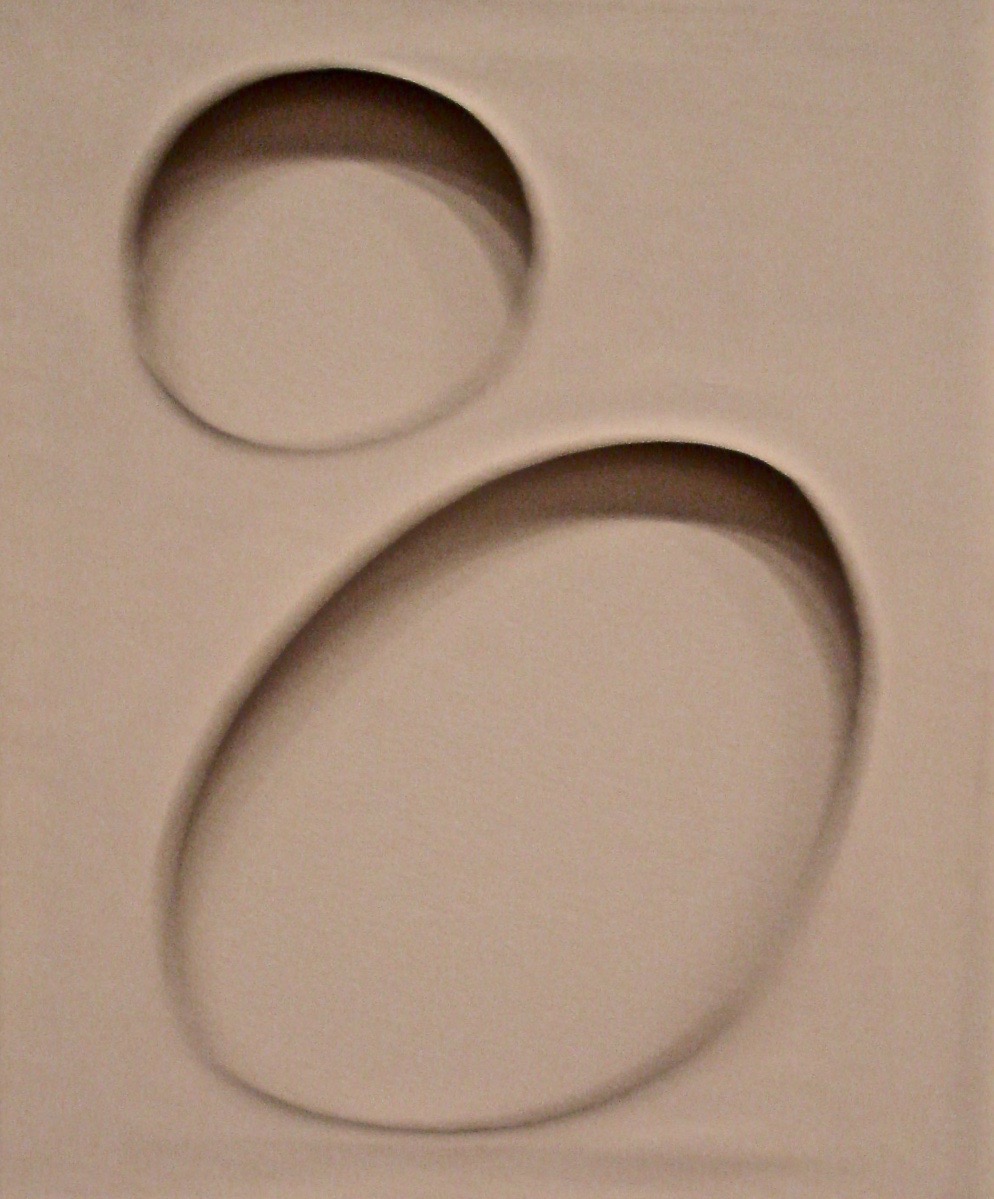
This visit made me think of my theory of contemporary abstract art. I think there are four main reasons why artists resort to producing abstract art. First, they have little actual drafting and drawing skill and would be hard put to produce something realistic. Perhaps Jackson Pollack fit into this category. Second, they are so incredibly talented and precocious as artists that they can and have produced almost any style and any quality of art that could be mentioned. They have already done so much in art that they become bored and resort to abstract art. Perhaps Pablo Picasso fit into this category. Third, they have been an art student at a current college or university studio art program, most of which hold realistic art in disdain as highly derivative and non-creative. If one wants status as an artist nowadays, go for abstract. I think there is a fourth category: those few artists who deep down inside, intrinsically love the abstraction of color patterns and designs and have a knack for producing moving works. Sometimes, young children fit into this category.
There was a psychologist at the University of Maine, Colin Martindale, who did research on creativity in the arts. His empirical research was a little obtuse and not too convincing, but his theory was pretty good, I think. He argued that in any culture that puts a high value on creativity (which, whatever else you want to say about it, includes the notion that one is producing something novel or at least quite rare) the culture pushes creators to find ever newer and more novel things to produce. Otherwise, they would not be considered creative. (By the way, creativity is not the same thing as aesthetically pleasing.) In these creativity-obsessed cultures, in the arts, people must do something that has not been done before. But as more stuff has been done already, it becomes increasingly difficult to find something new to do. This is the dilemma of needing to be creative. In visual art, think of all the ways and things that people have already painted. We long ago had artists who produced religious art until they drove that genre into the ground. Then we had artists doing historic paintings until they drove it into the ground. Then we had Dutch painters who did indoor scenes and everyday life until they drove that genre into the ground. Then we had the Hudson River School that produced so many beautiful landscapes that they drove the genre into the ground. Then we had impressionists until we had all the genre could provide; then cubists; then abstract expressionists. Well, you get the idea. We have had artists who did away with the referent of the art—the subject matter, but then we had art that was about as abstract and expressionistic as could be had. We have had artists who have become about as realistic as can be done in their art, achieving photo realism. We have artists who have painted about as bright of colors as can be used. We have had artists who have painted about as large of canvasses as can be made and as tiny as can be made. We have artists who have used almost all reasonable materials, including house paint, feces, and blood. We have had artists who have painted almost everything under the sun and from every angle and perspective. So today we have artists that are working in installations and happenings and shock value—anything to be novel. Andy Warhol once took an actual can of Campbell Tomato Soup and signed it, and said, "There is my piece of art." We have a urinal on the wall of a mueum. It is no longer creative to simply put ordinary objects in an art gallery. People have done that.
So what can someone produce that is novel—that can set him or her apart as creative? Martindale was right: what has already been done drives what people do next to be novel, and, with fewer choices, the art gets strange—garden hoses and dog turds and such. And, Voila, you have the Tate Modern.
And to end my description of London Culture and modern art, here is a picture of posters plastered on a garage door. See if you can read some of them. Maybe it is art as well. And, finally, here is a picture of my favorite piece of art seen in London, near Brick Lane. It is a piece of graffiti that covers the entire side of a building, a picture of a rat—way cool.
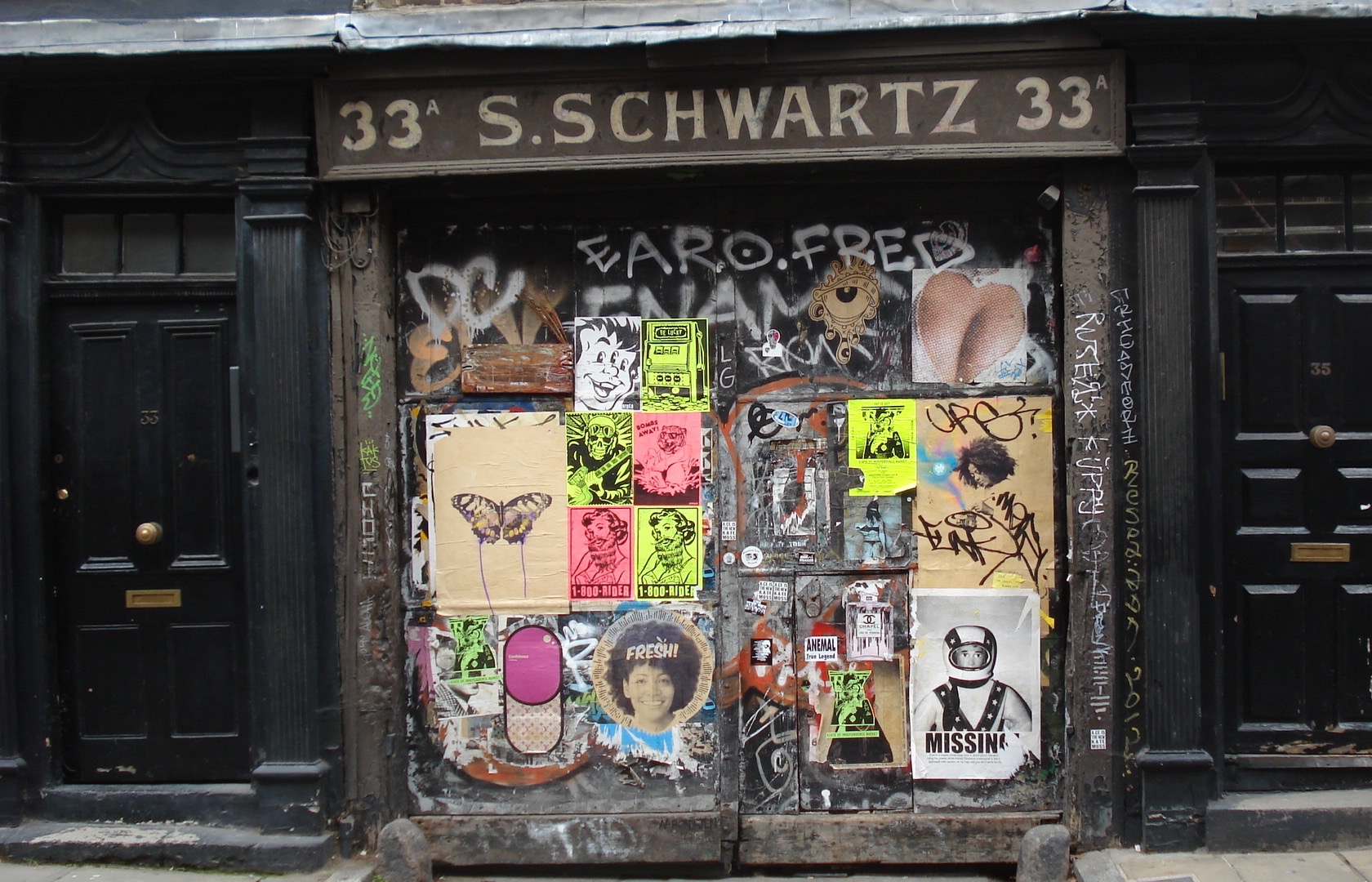
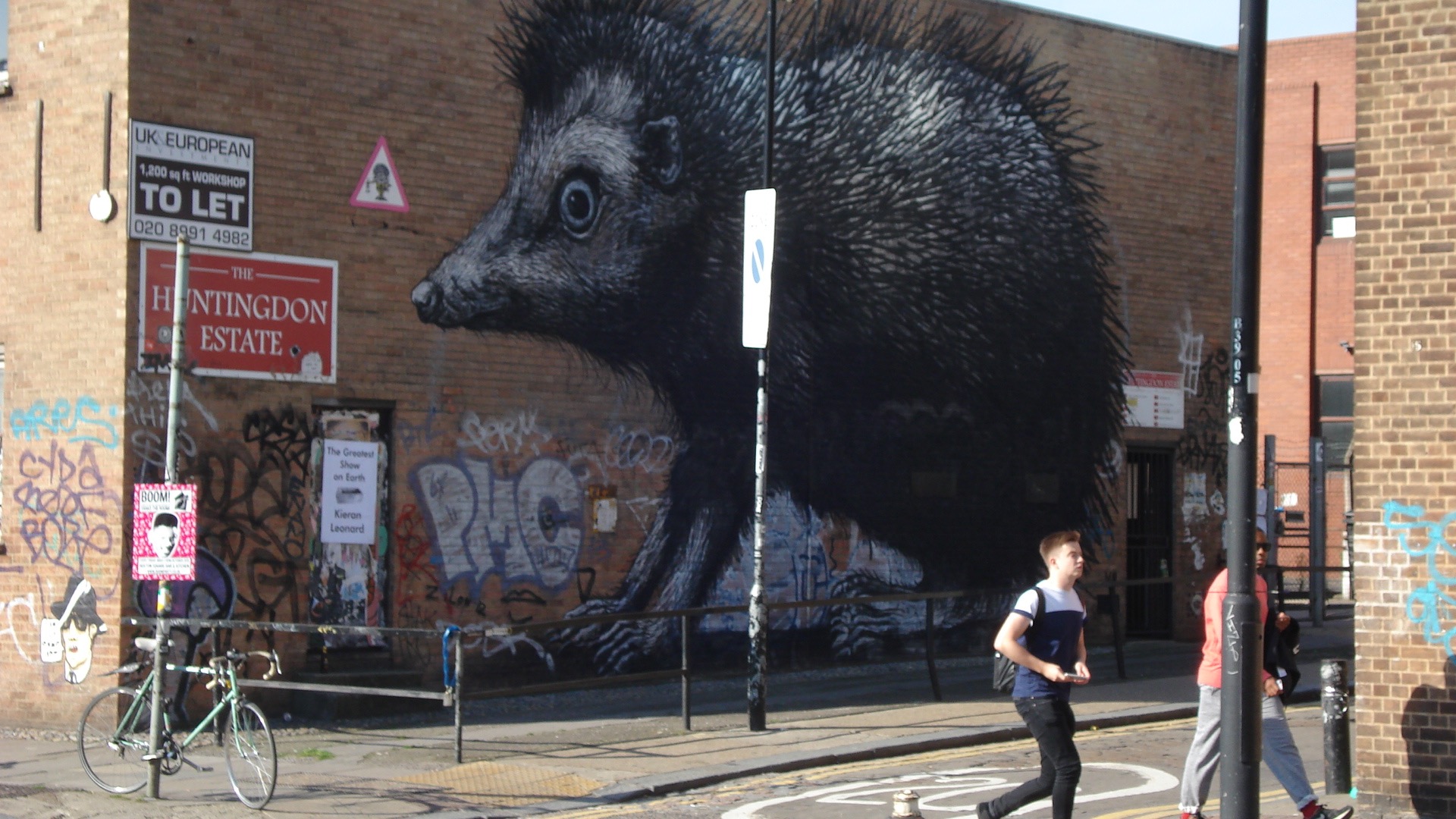
Pub Crawl
Forget what has been said about bad English food. It is good. Well, it tasted good to us. Besides, virtually any cuisine of the world can be had in London. But London is indeed an expensive place. It is also known for English pubs, many of them old. In fact, we found that about every pub we visited mentioned that Charles Dickens had eaten there. One pub said above the door: “Remodeled in 1679.” At any rate, in part for cost reasons and in part because we liked the idea of eating in pubs, we wanted to savor pub food, and we sought out some of these old establishments, rather than expensive restaurants. The pubs tended to be small, sometimes squirreled away in a back alley, usually filled with dark wood and a narrow staircase to the upper floor, where the eating occurred. Apparently, only drinking occurs on the ground floor. We ate at “The White Lion,” “The Last Running Footman,” and “The Lamb and Flag” where bare fisted boxing matches used to take place.
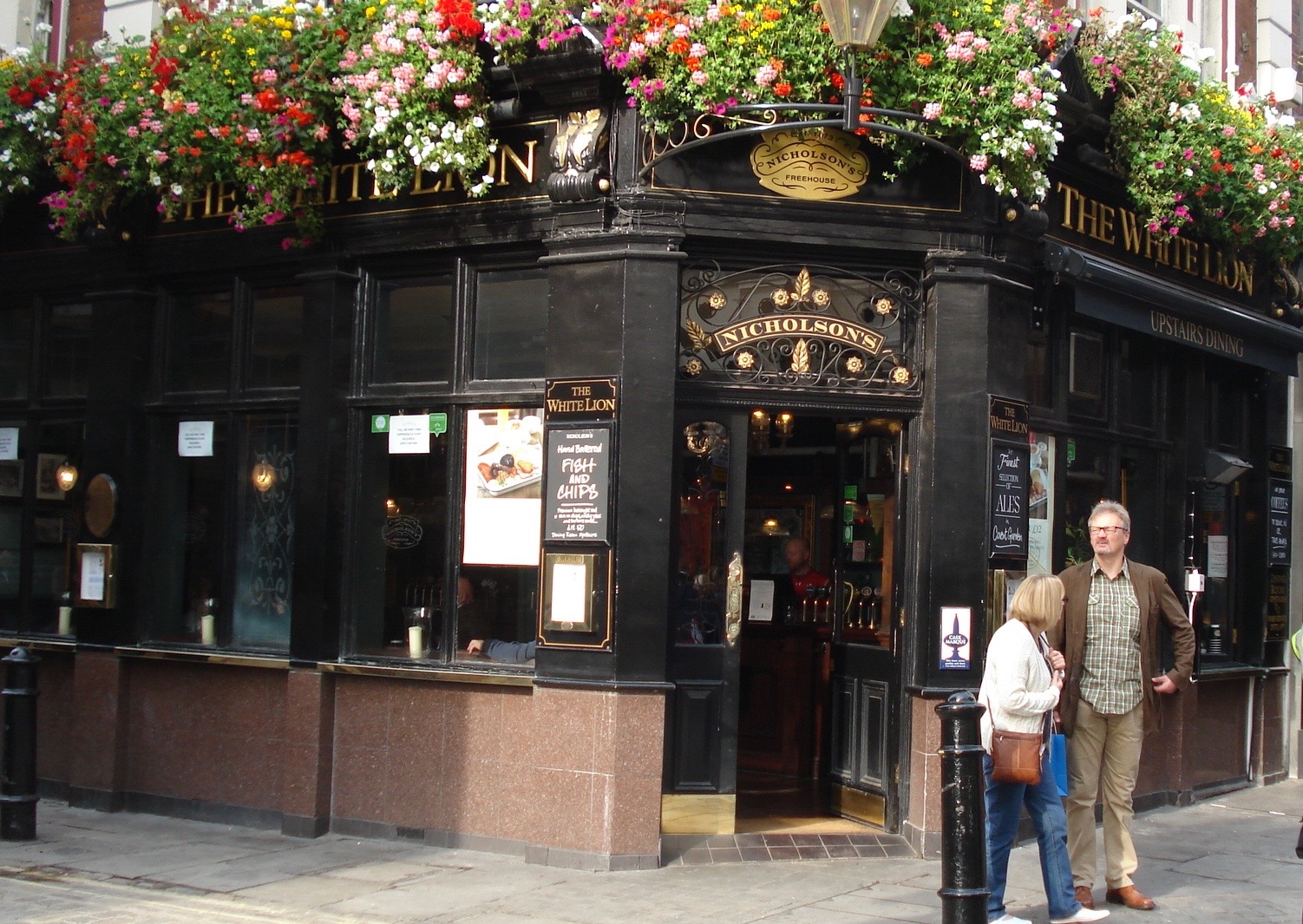
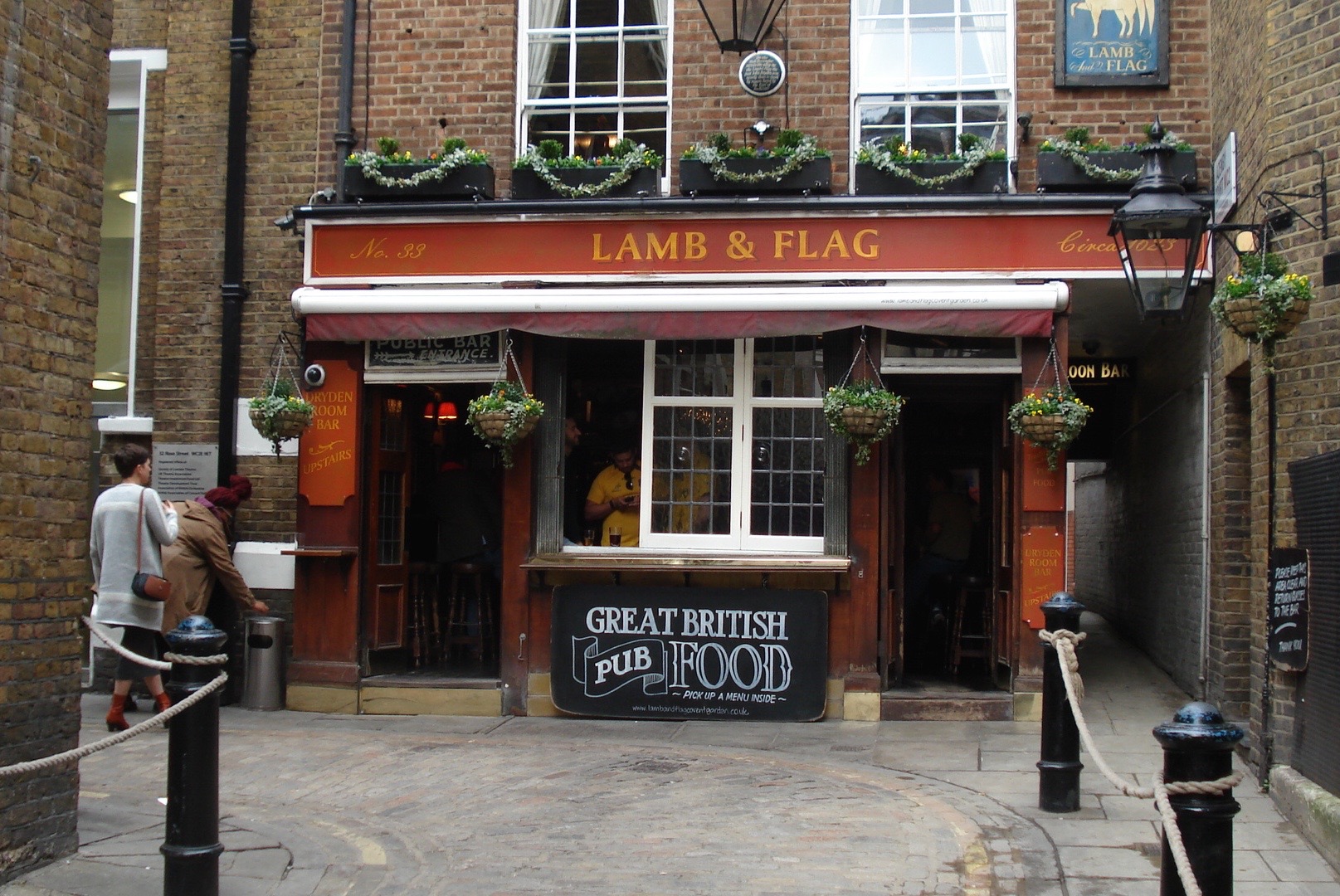
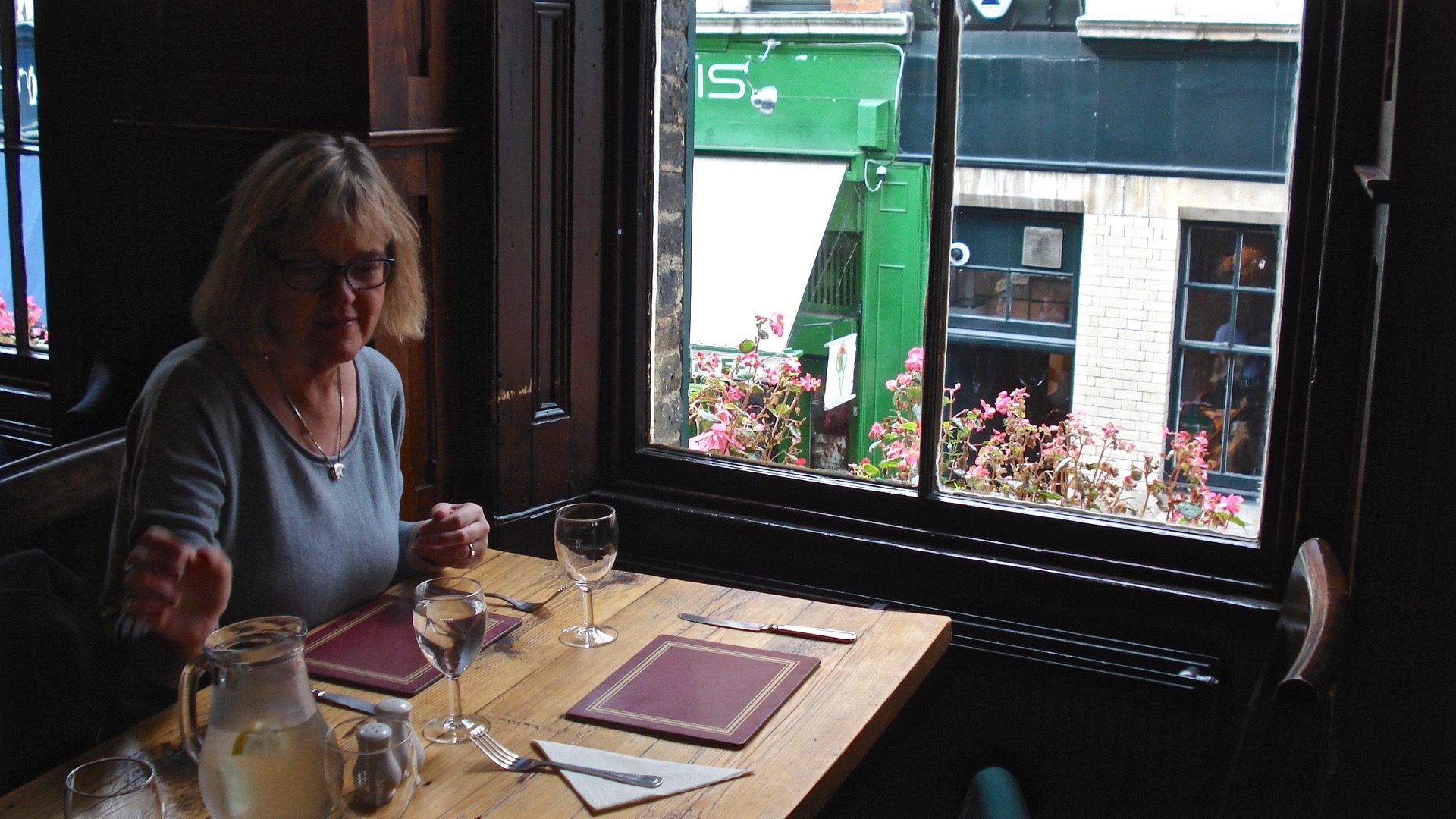
We had fish and chips on the street as well as at pubs. It was as good as we had hoped for—that means it was good. We had meat pies, oysters, and venison. For our last night in London we ate at our fancy hotel restaurant, enjoying a relaxing, late night meal, traditionally English, of roast beef and Dover sole, all cut and prepared at the table. It was the best Dover sole I have ever tasted. One night we saw a line snaking around the block waiting to get into Five Guys Burgers, which had just opened in London. Go figure; it isn’t like Londoners don’t have plenty of burger joints. I think the explanation has nothing to do with Five Guys. I think that whenever Londoners see a queue they feel compelled to go stand in it. But that was a queue we decided we did not have to stand in.
And that was our trip to London, and we had to come home. We say we will be back. I hope that is truly the case.

